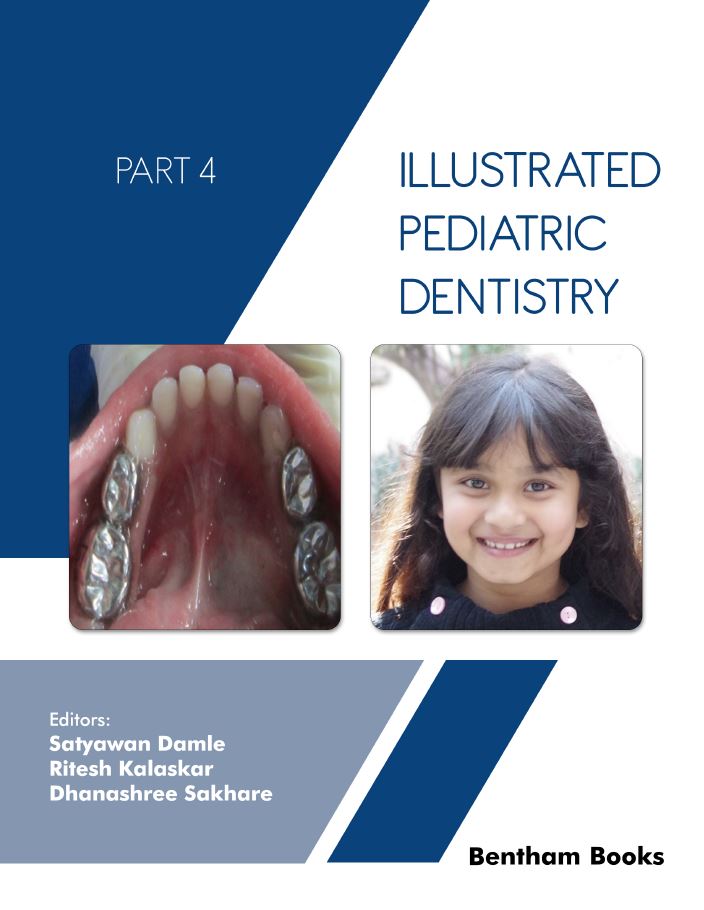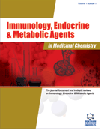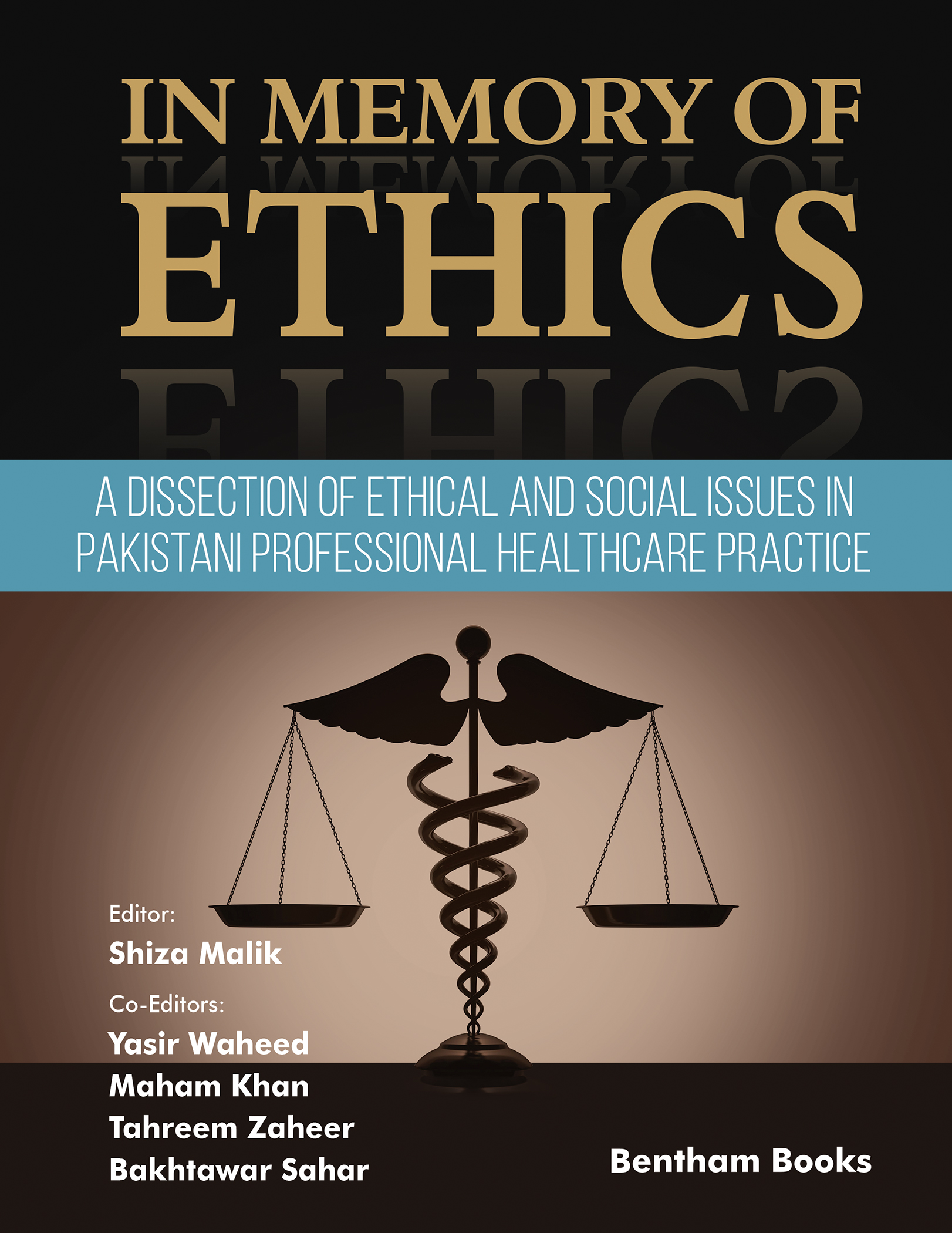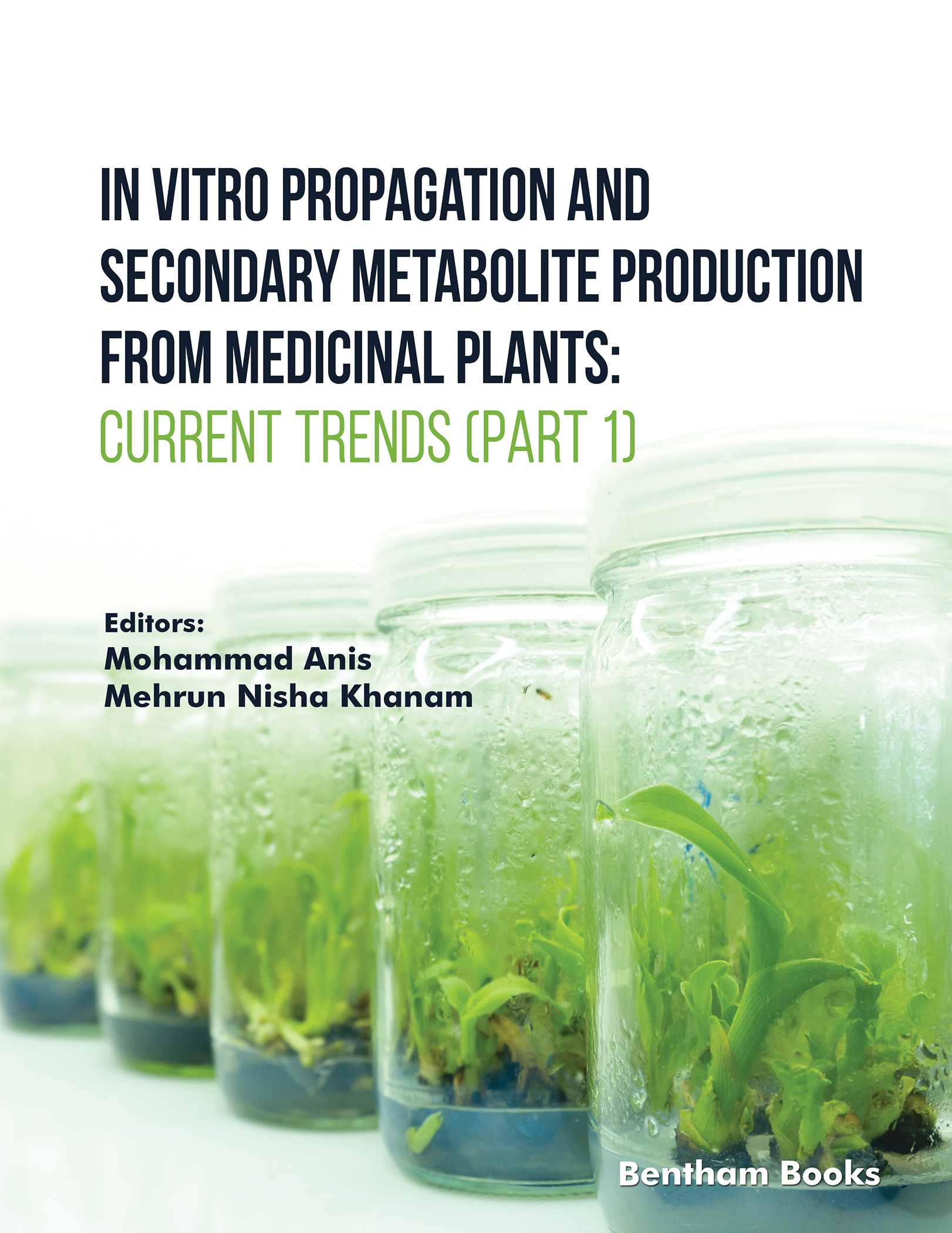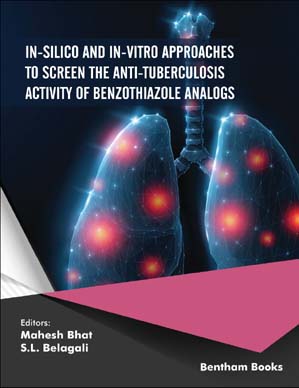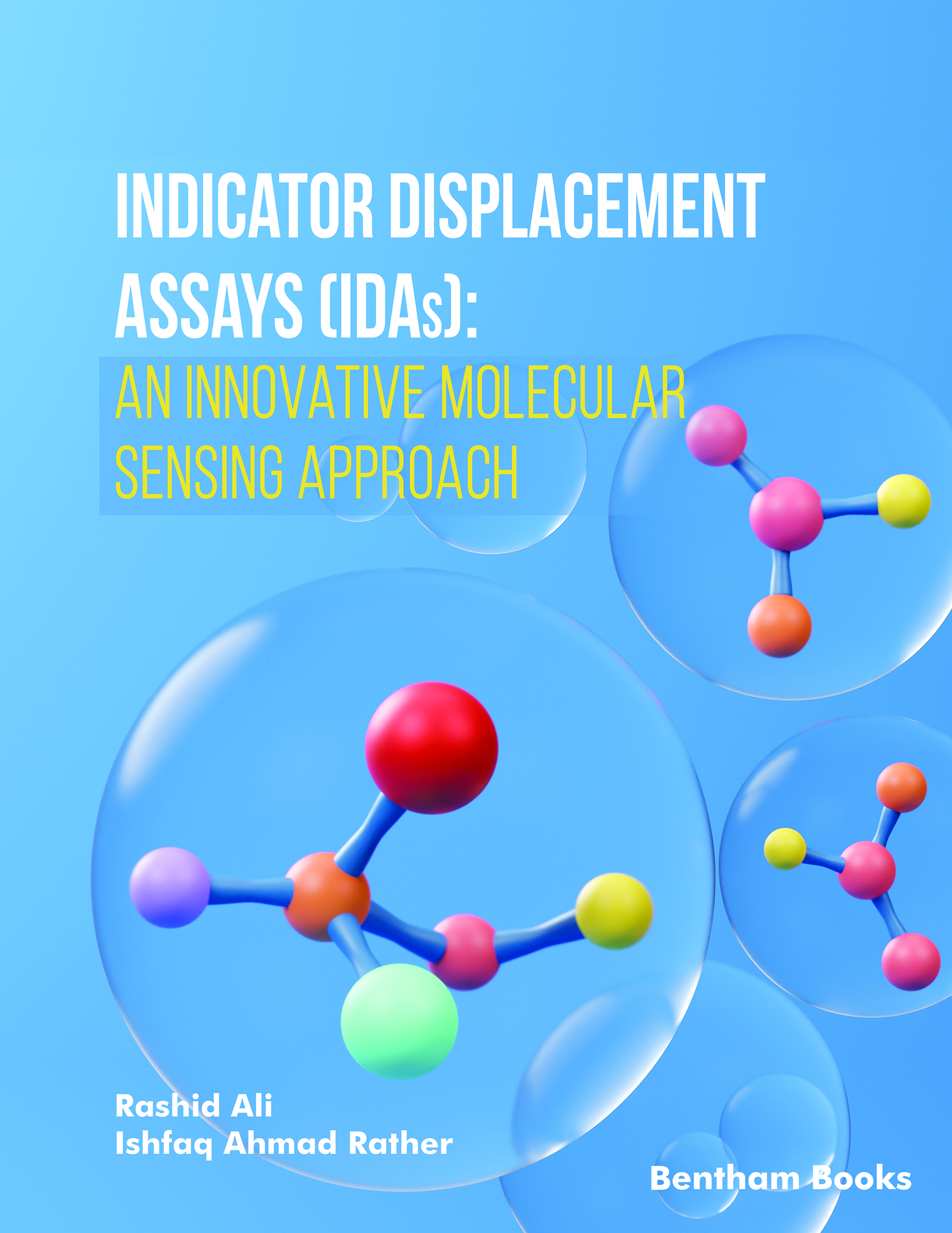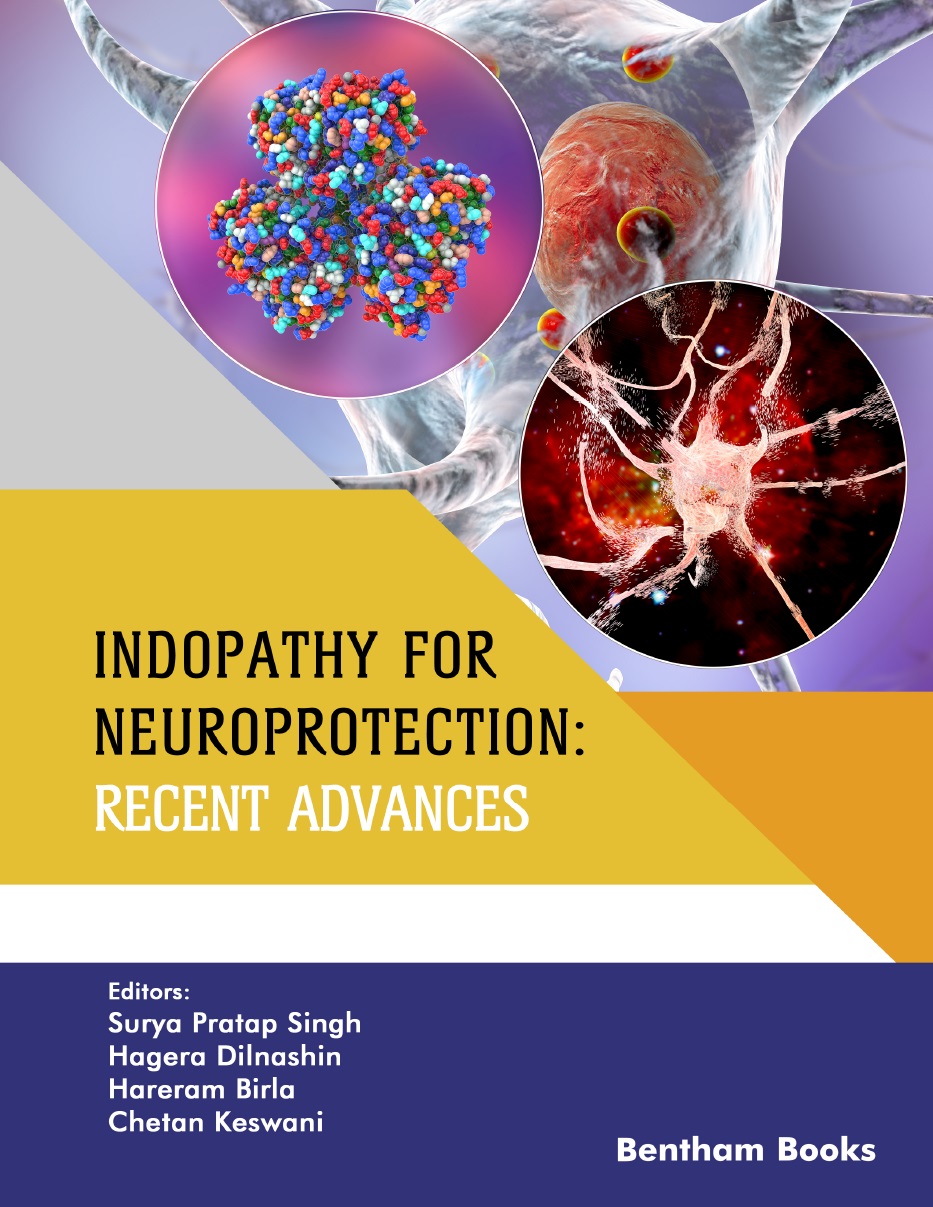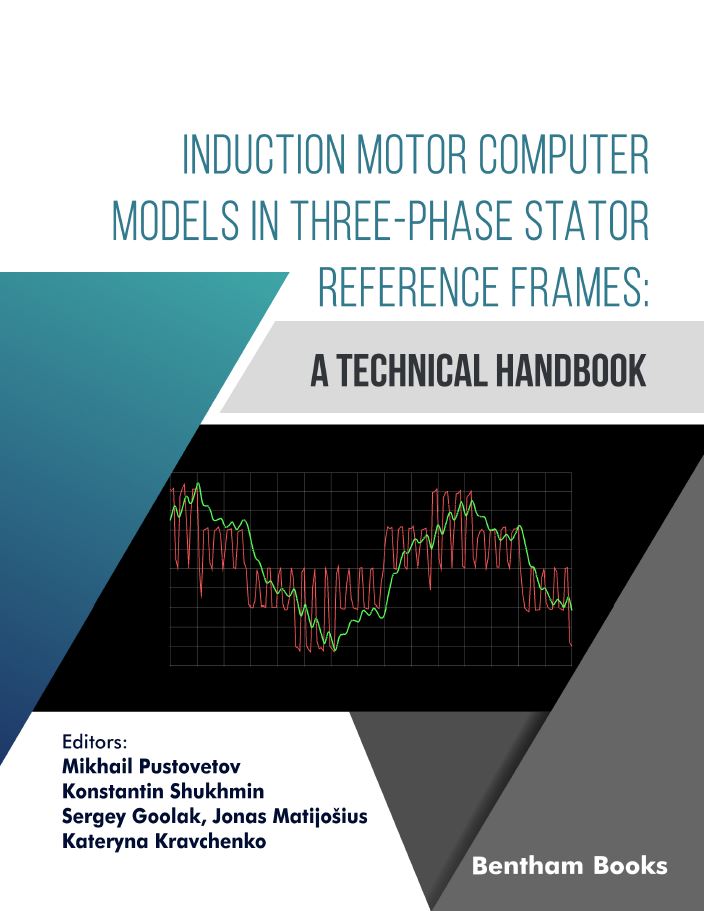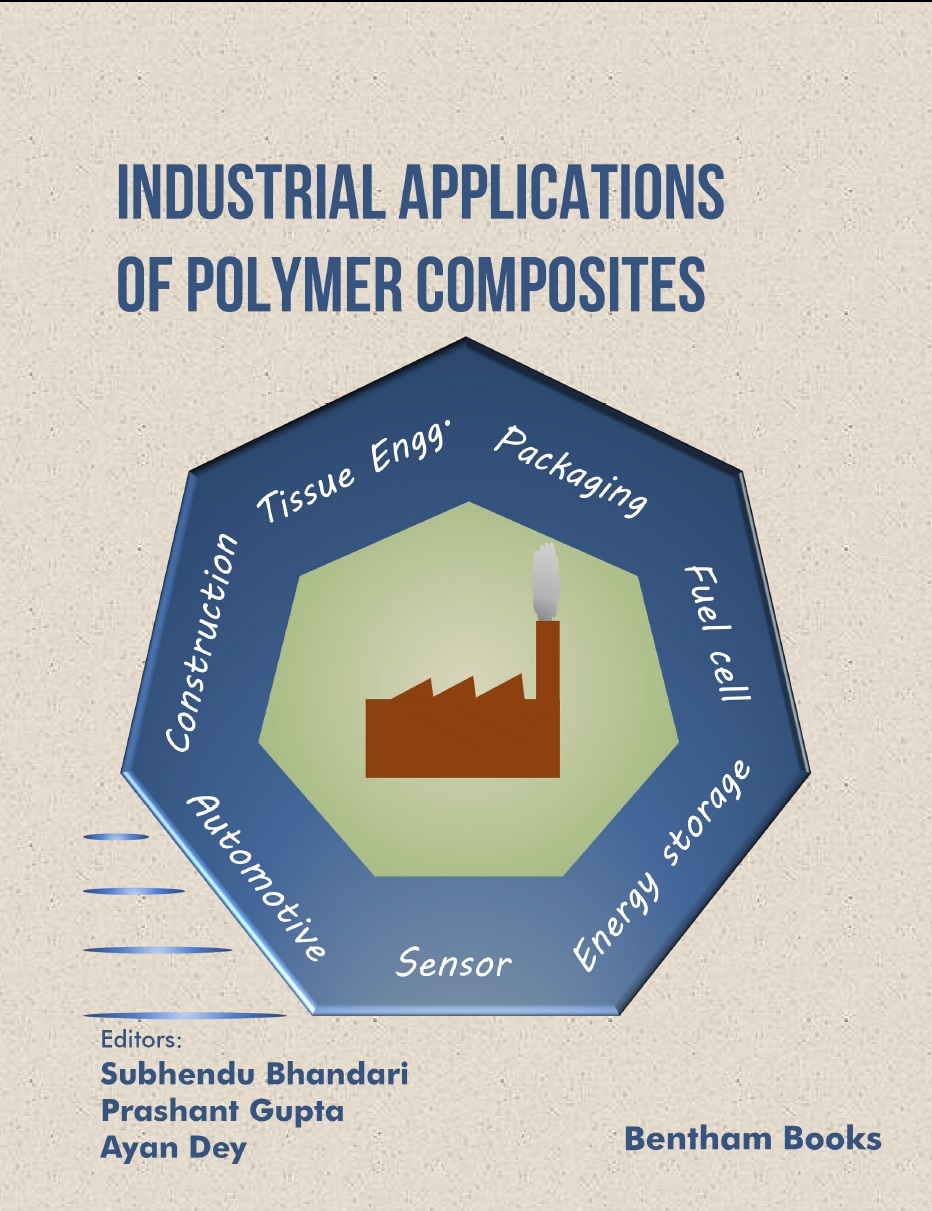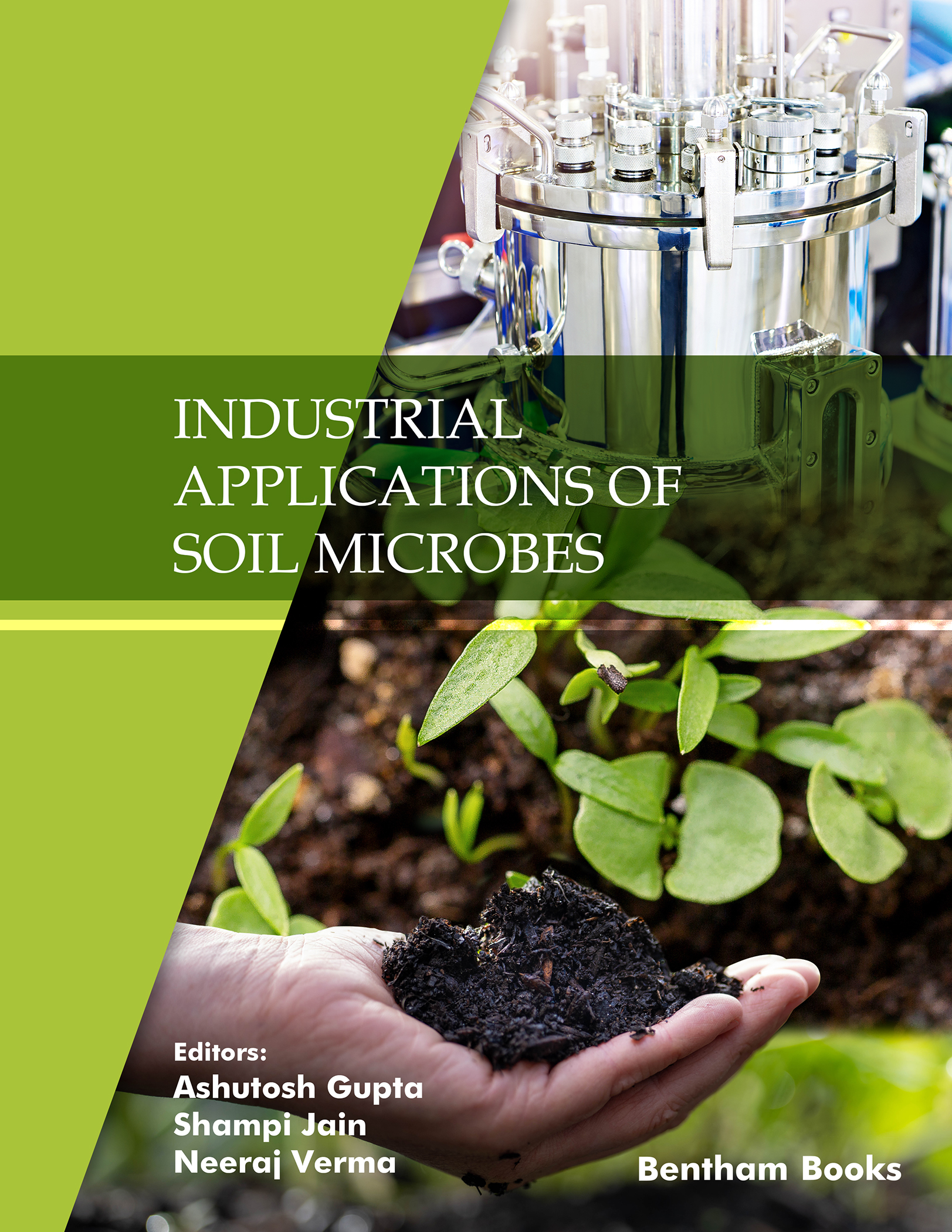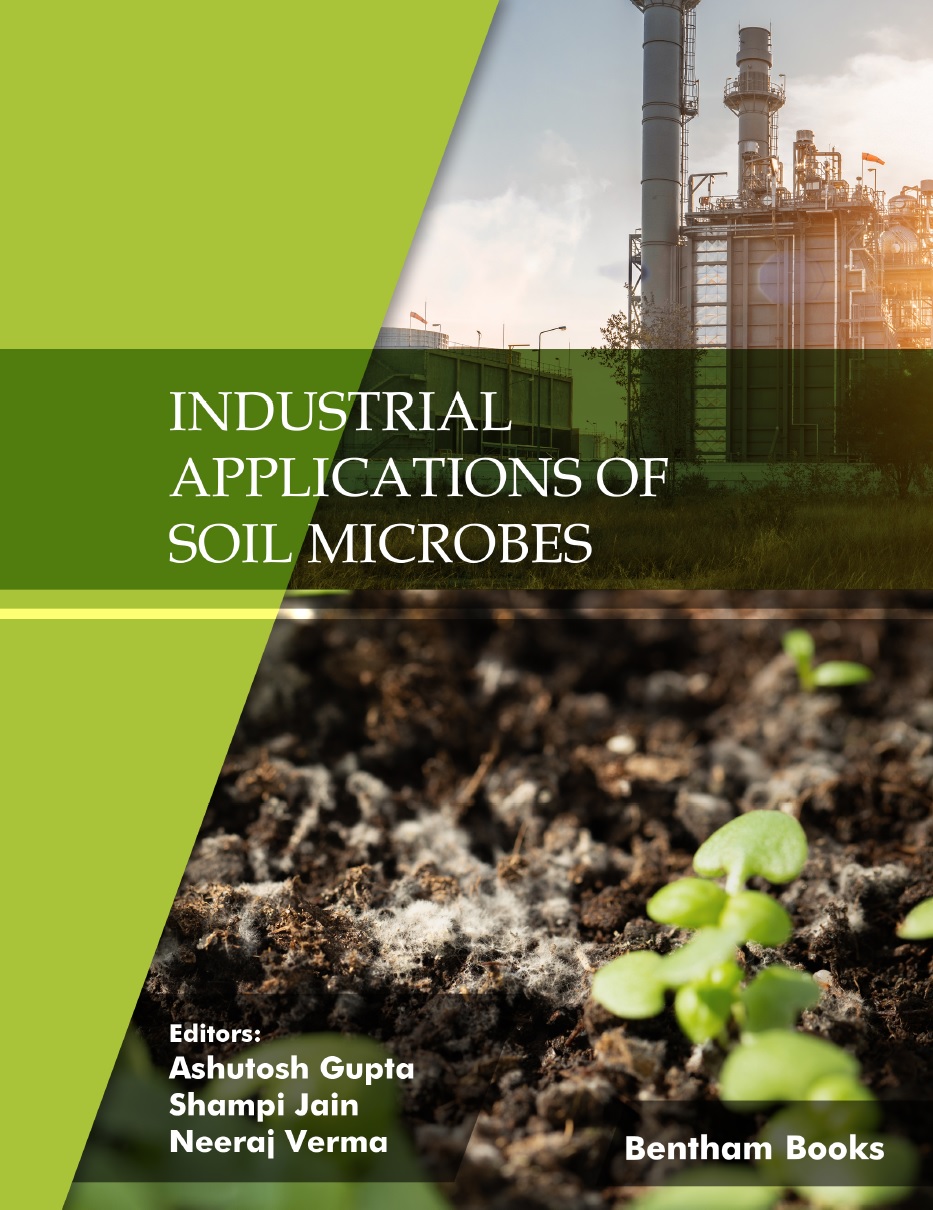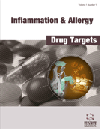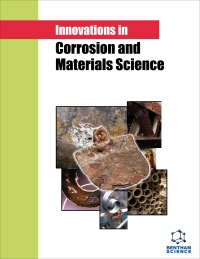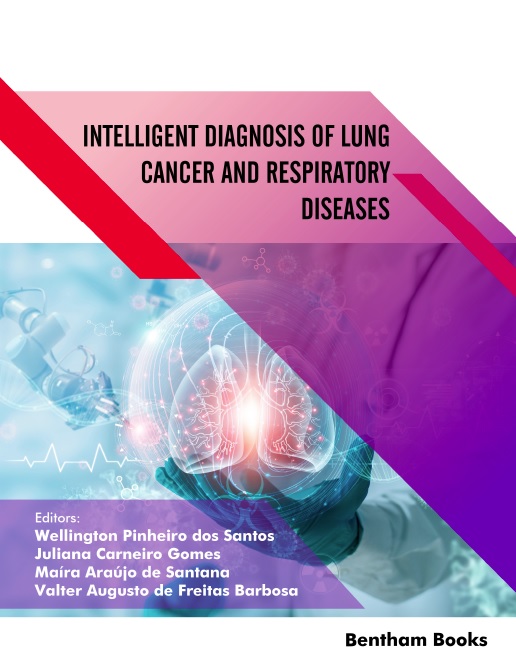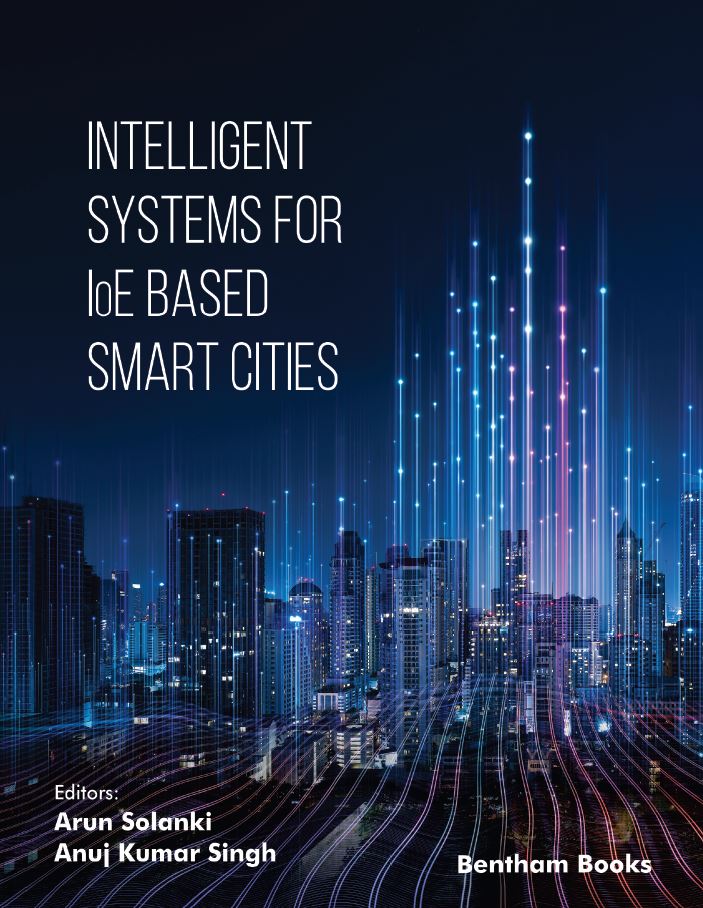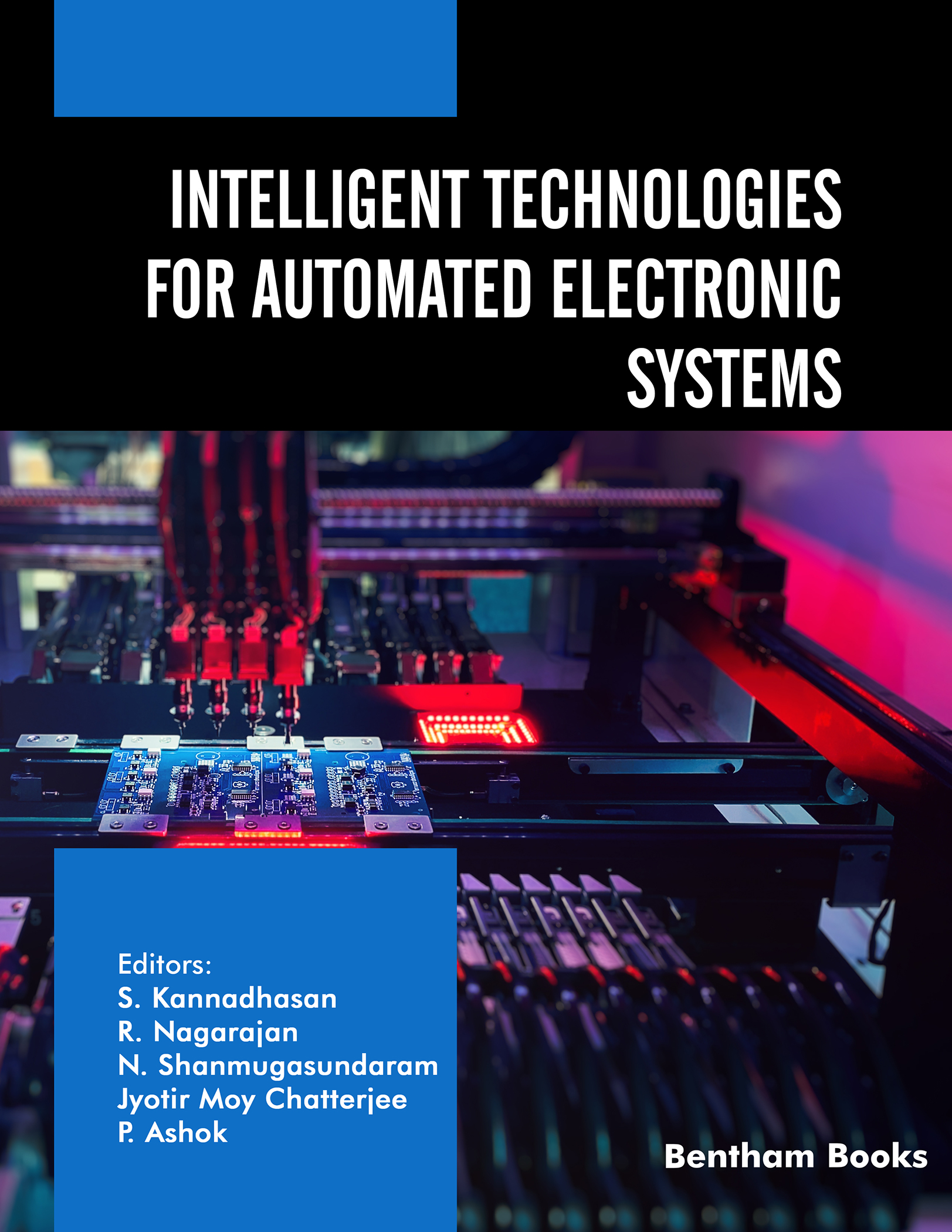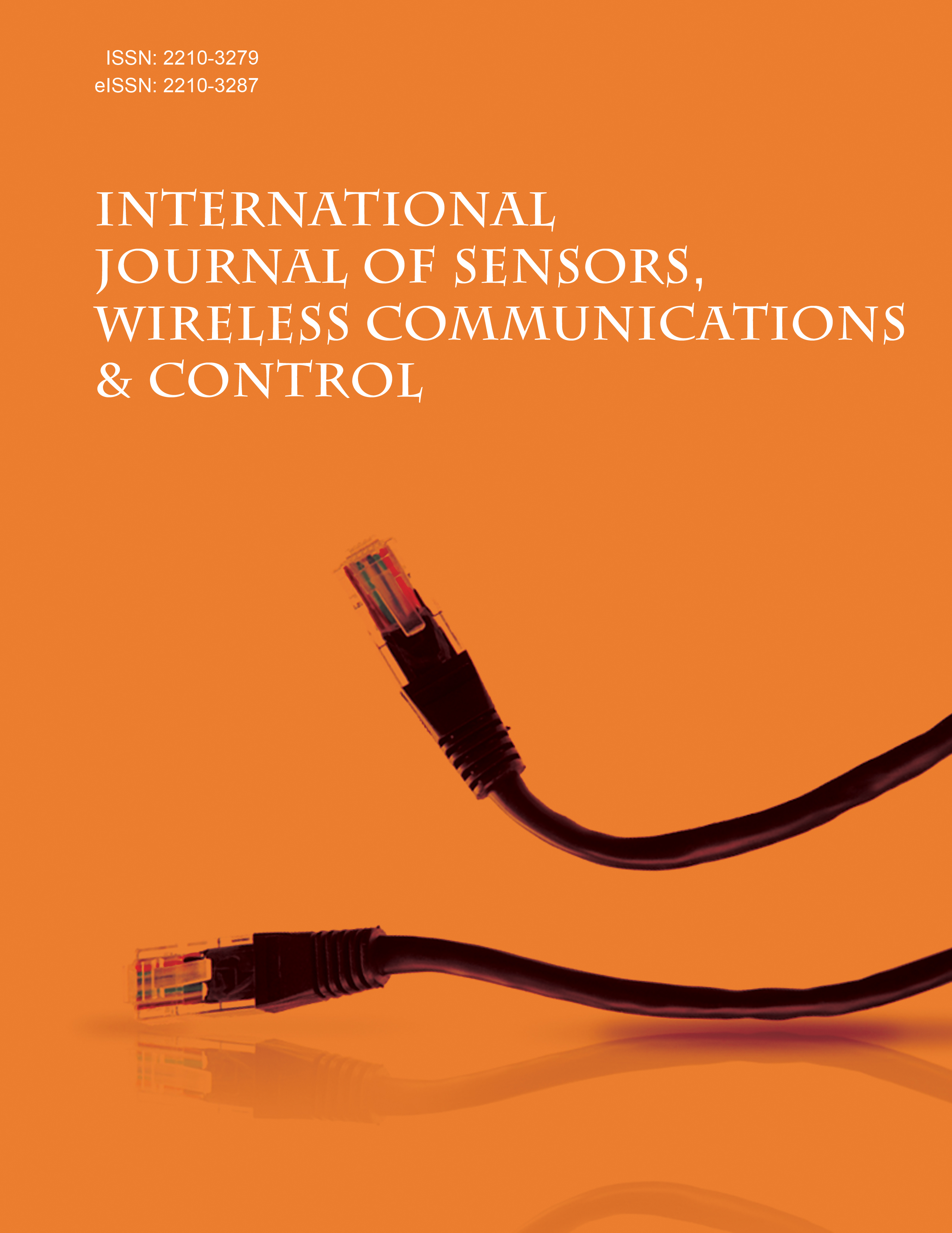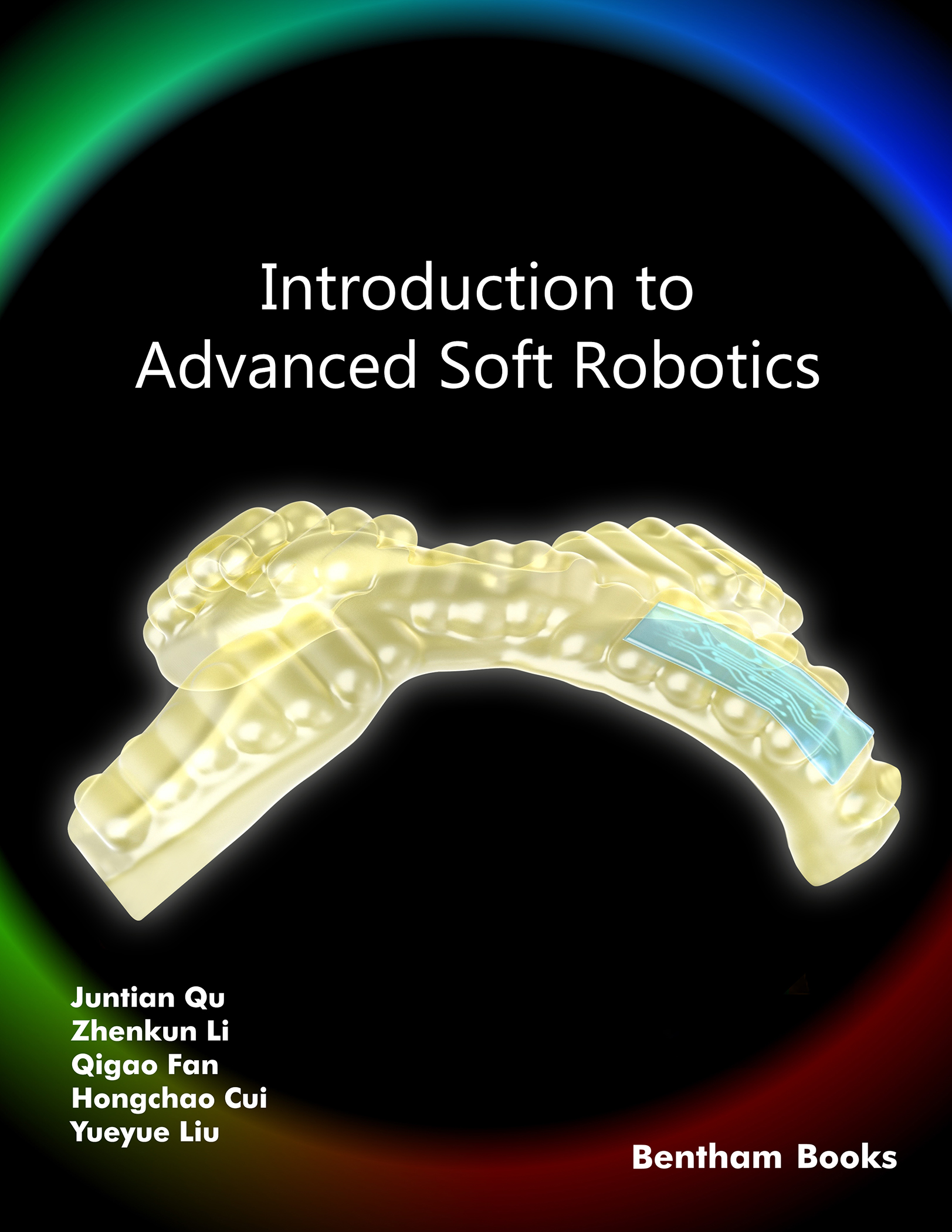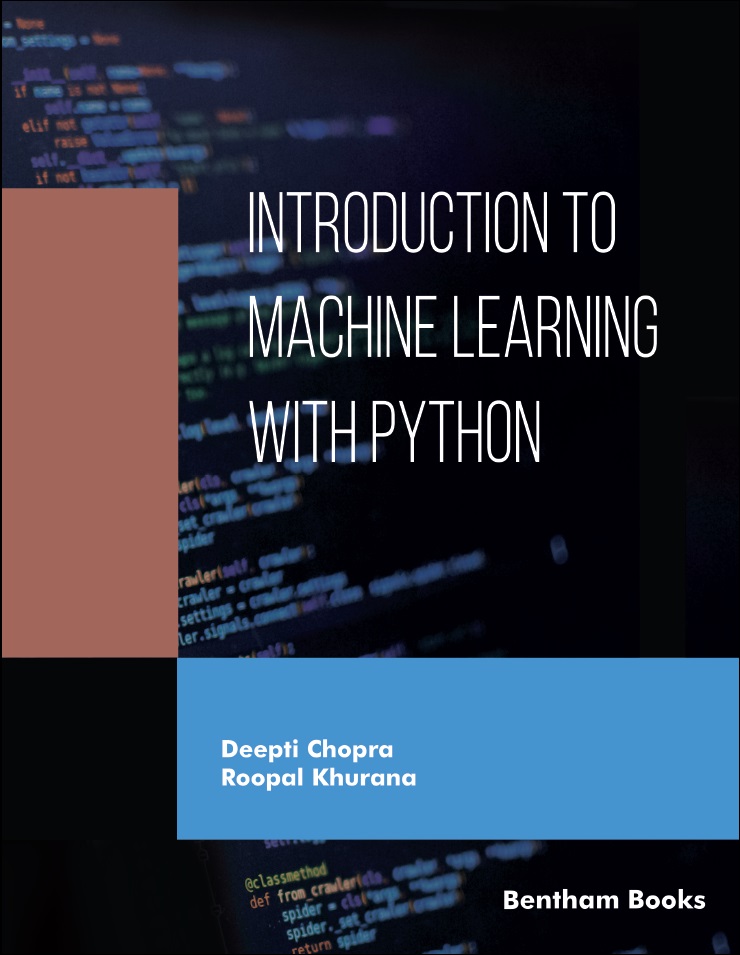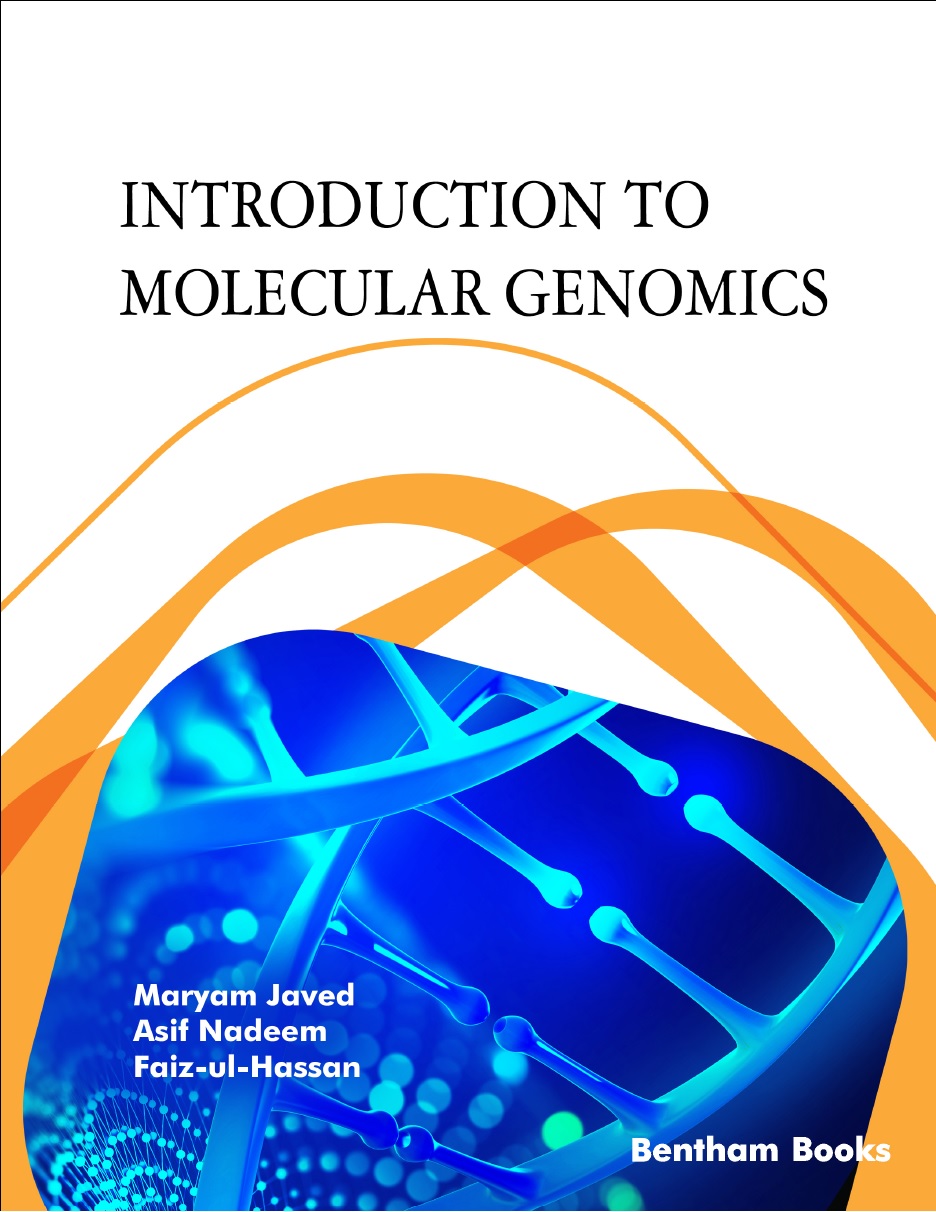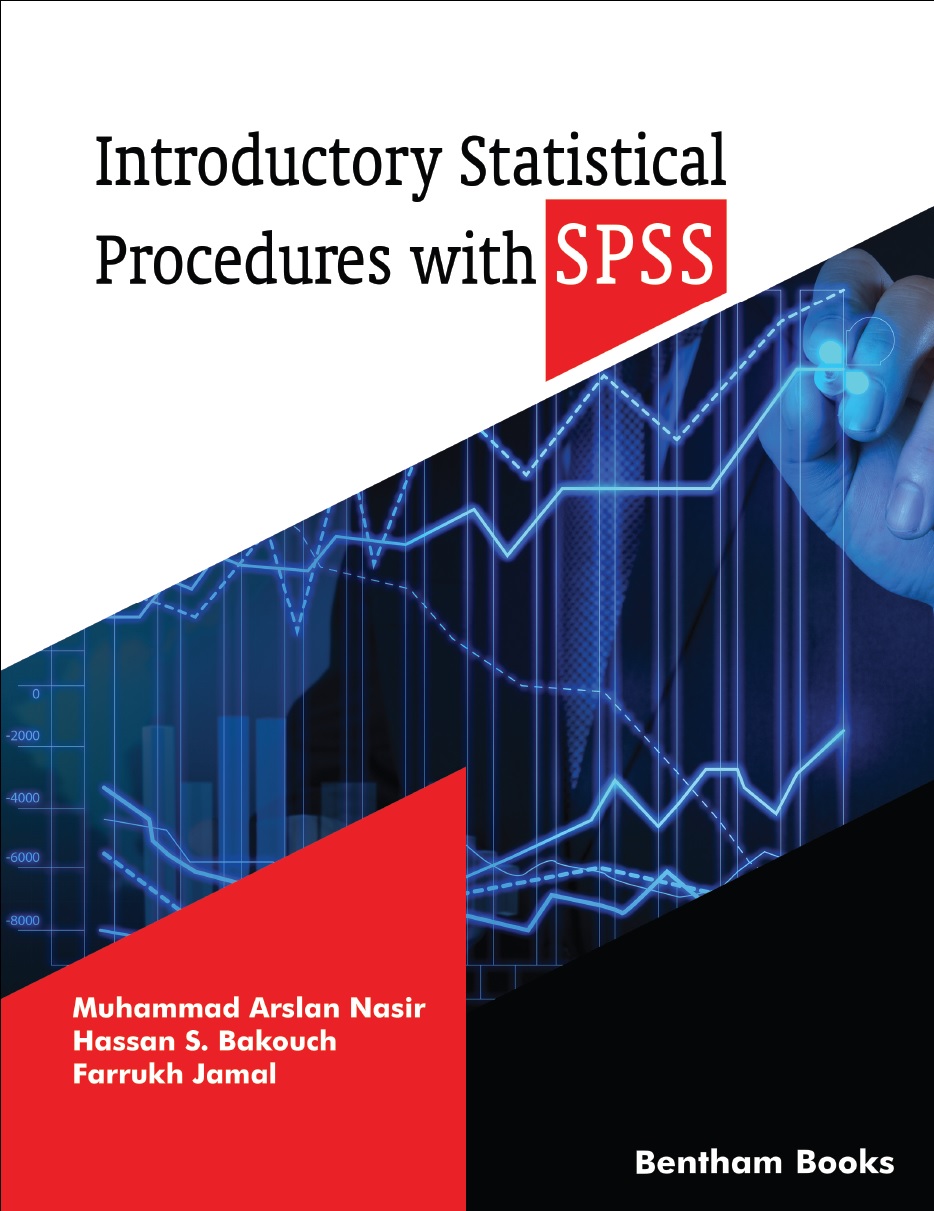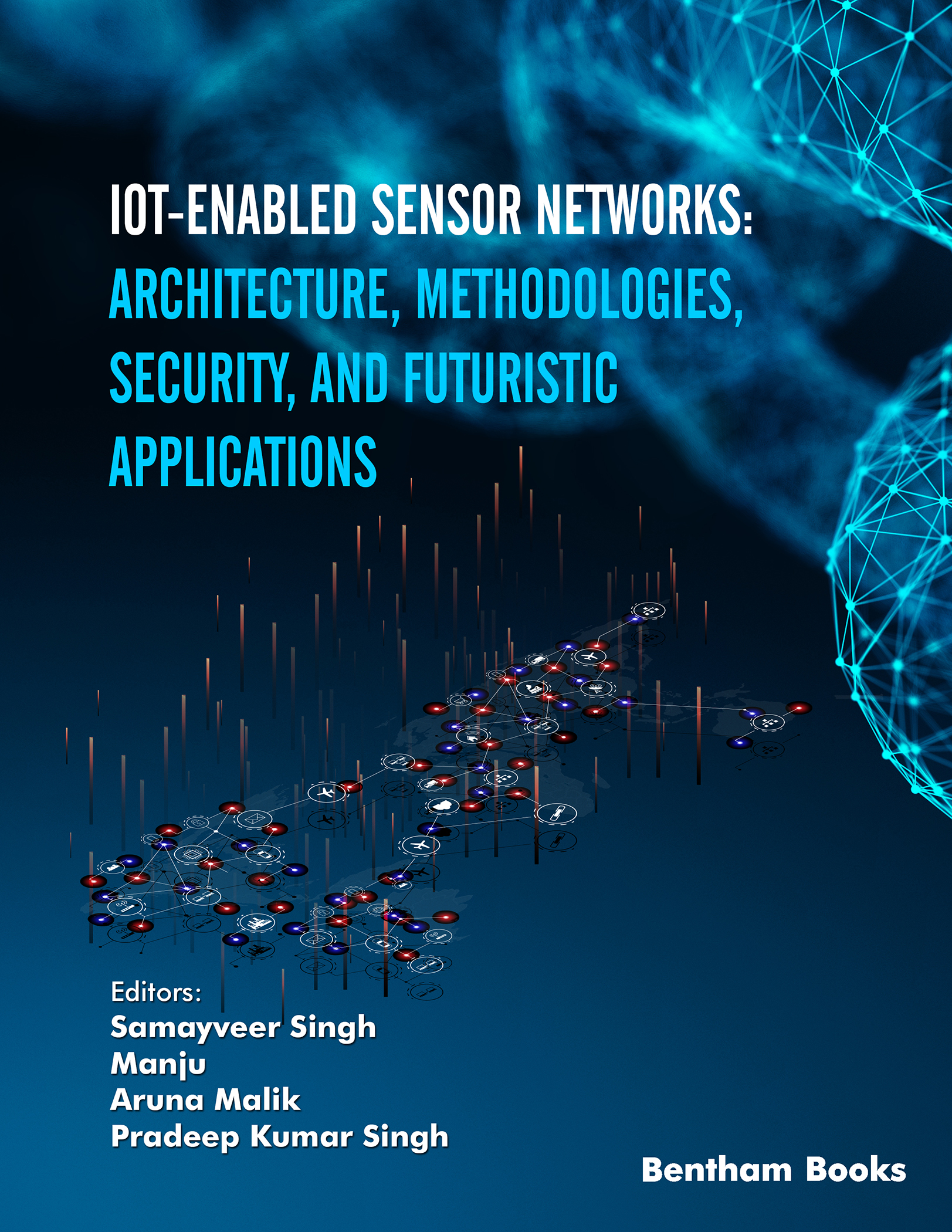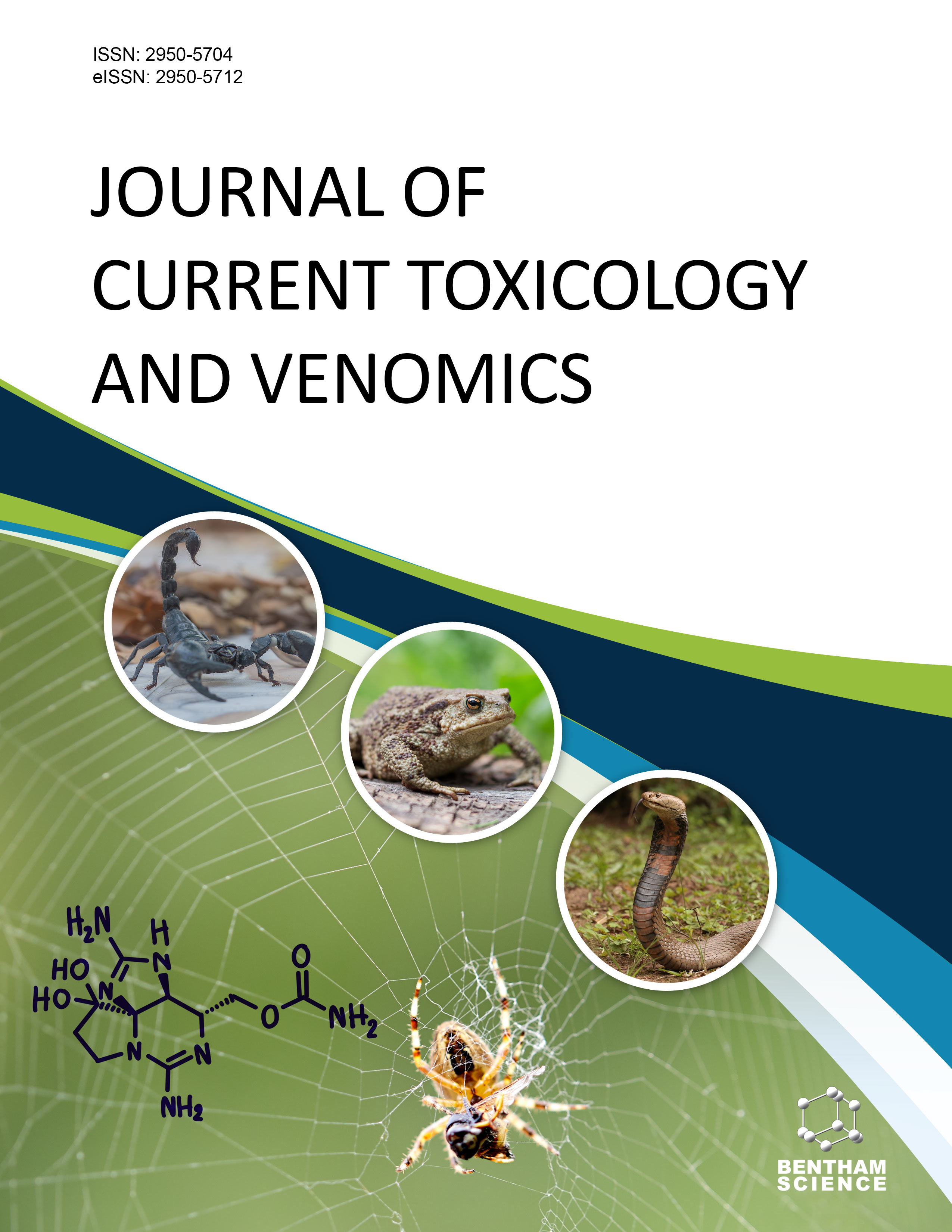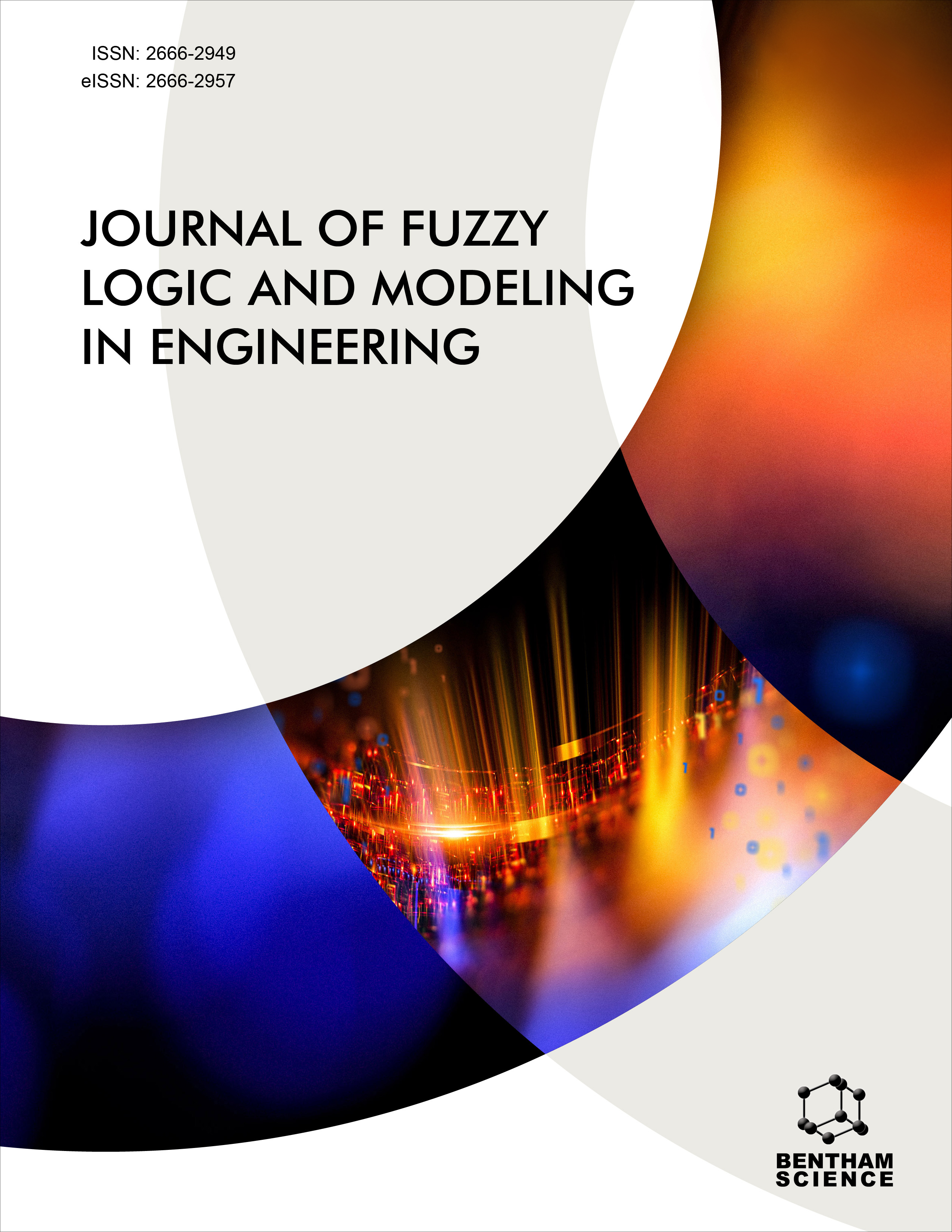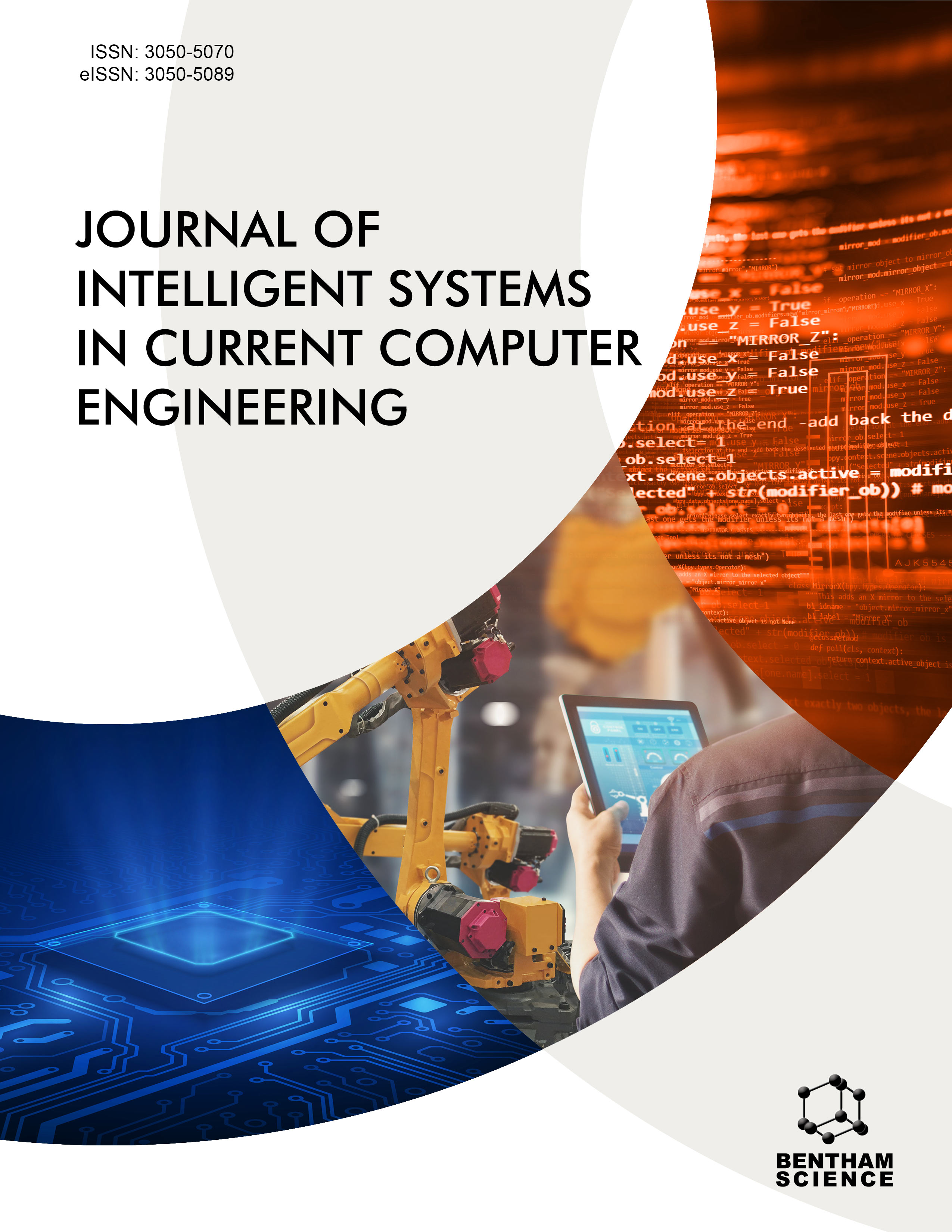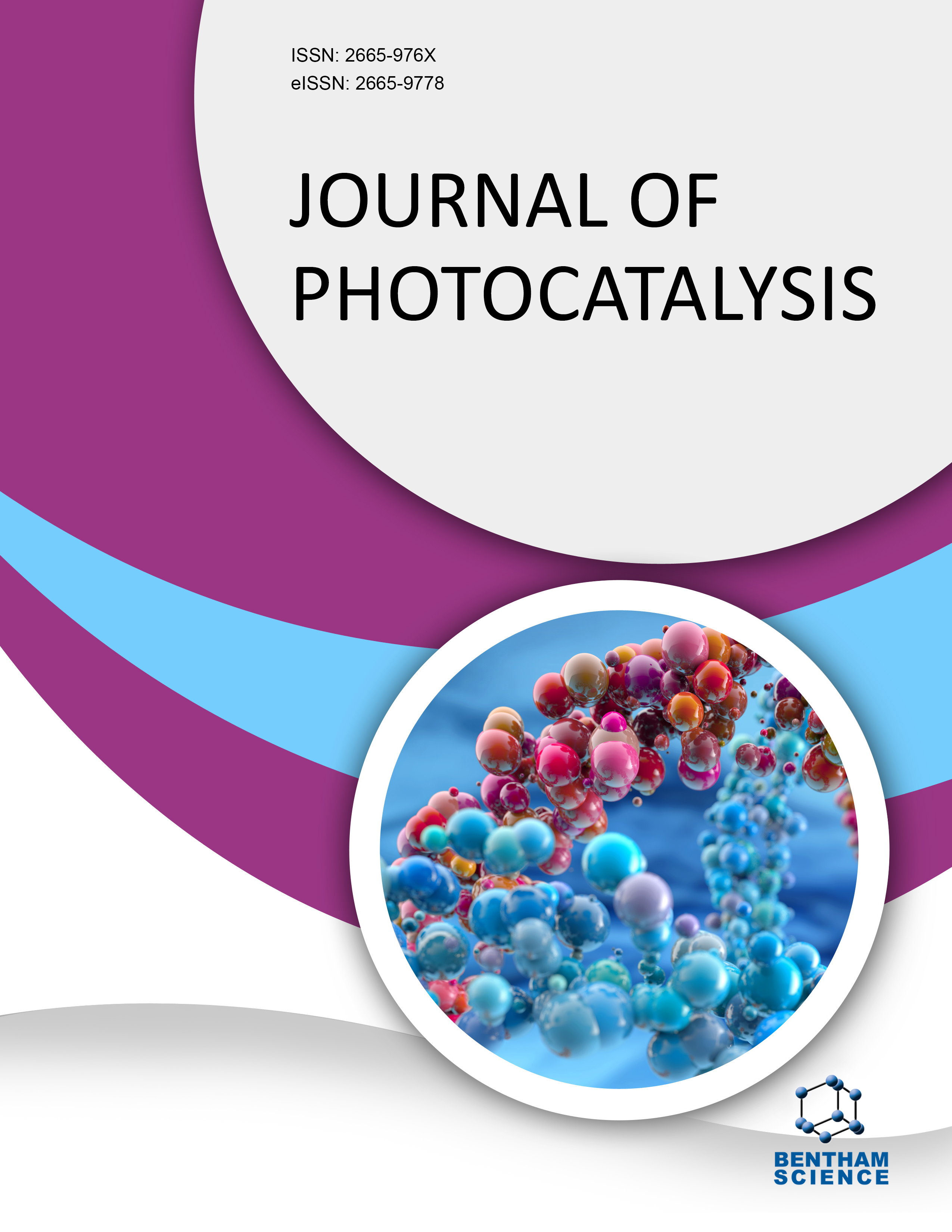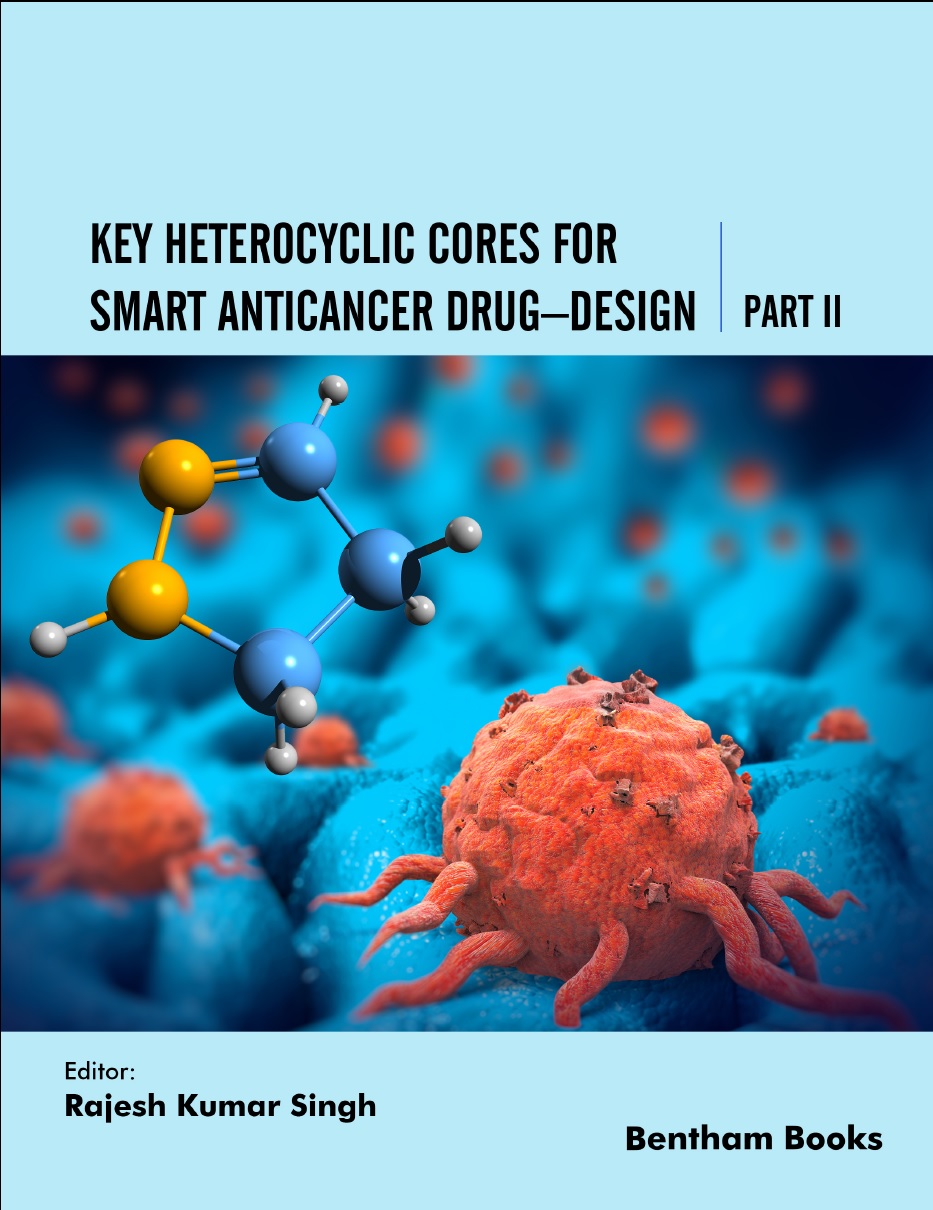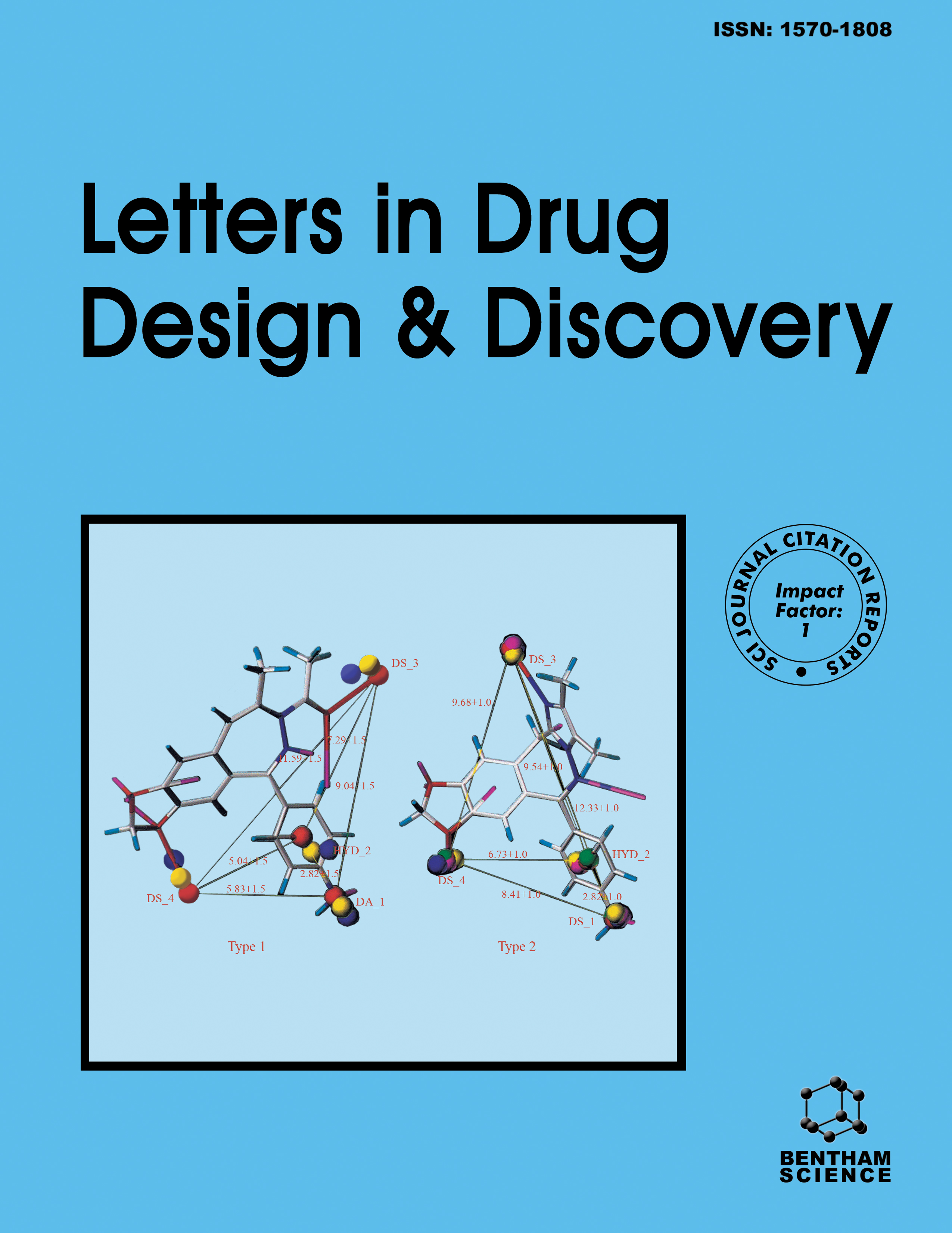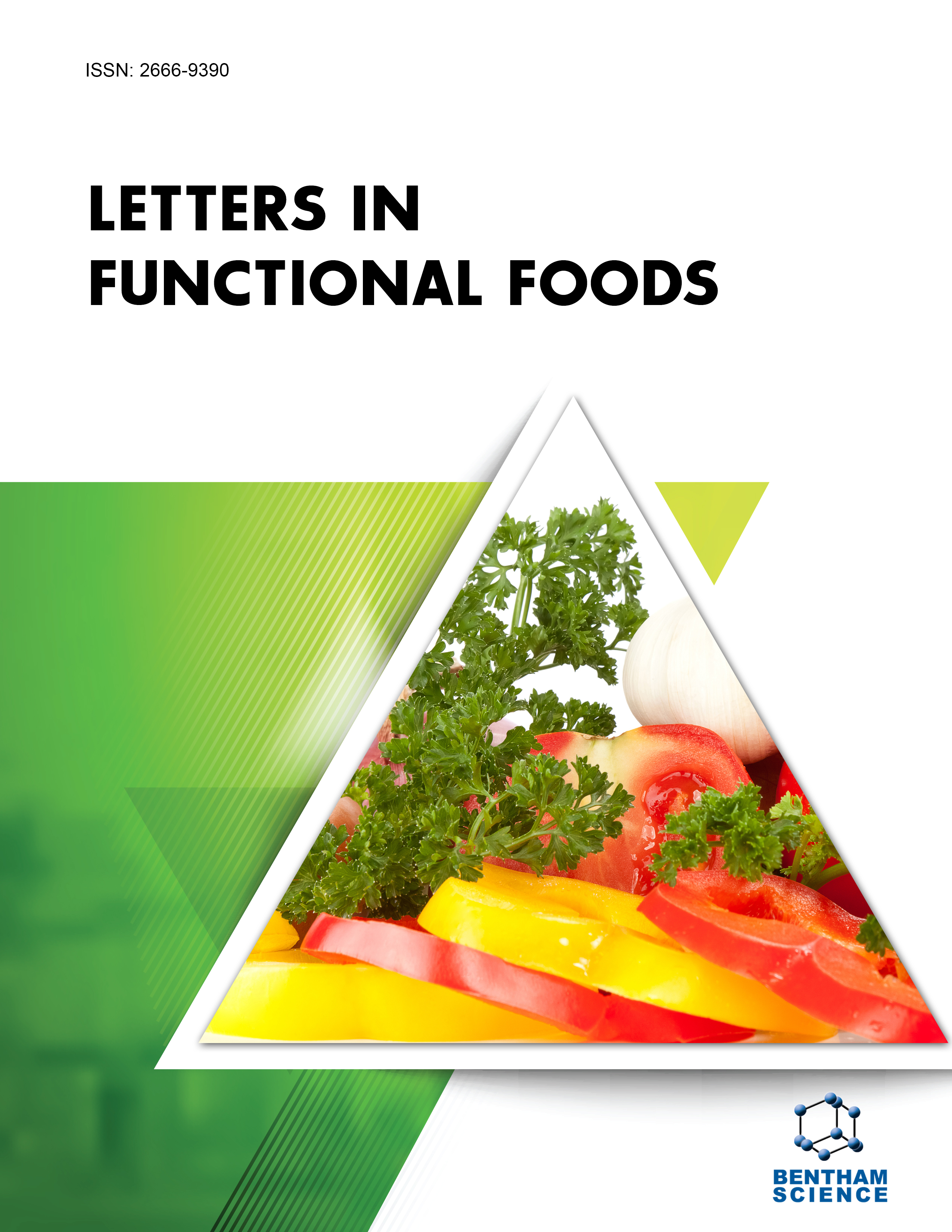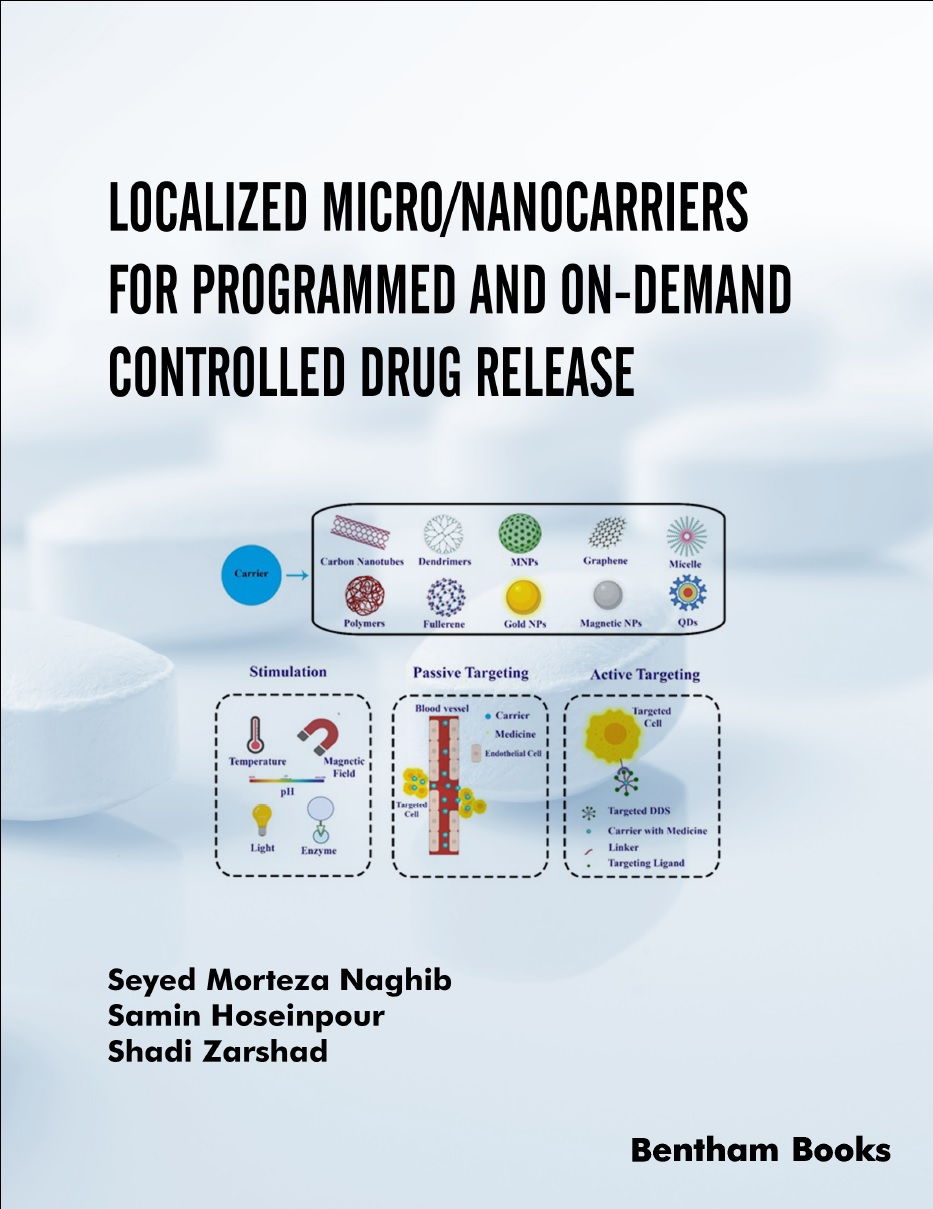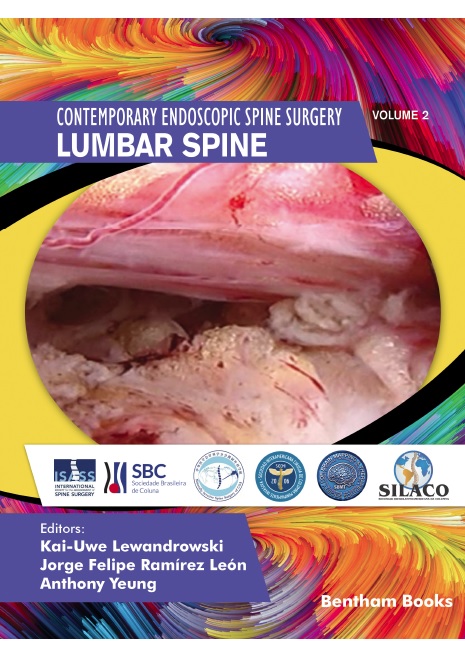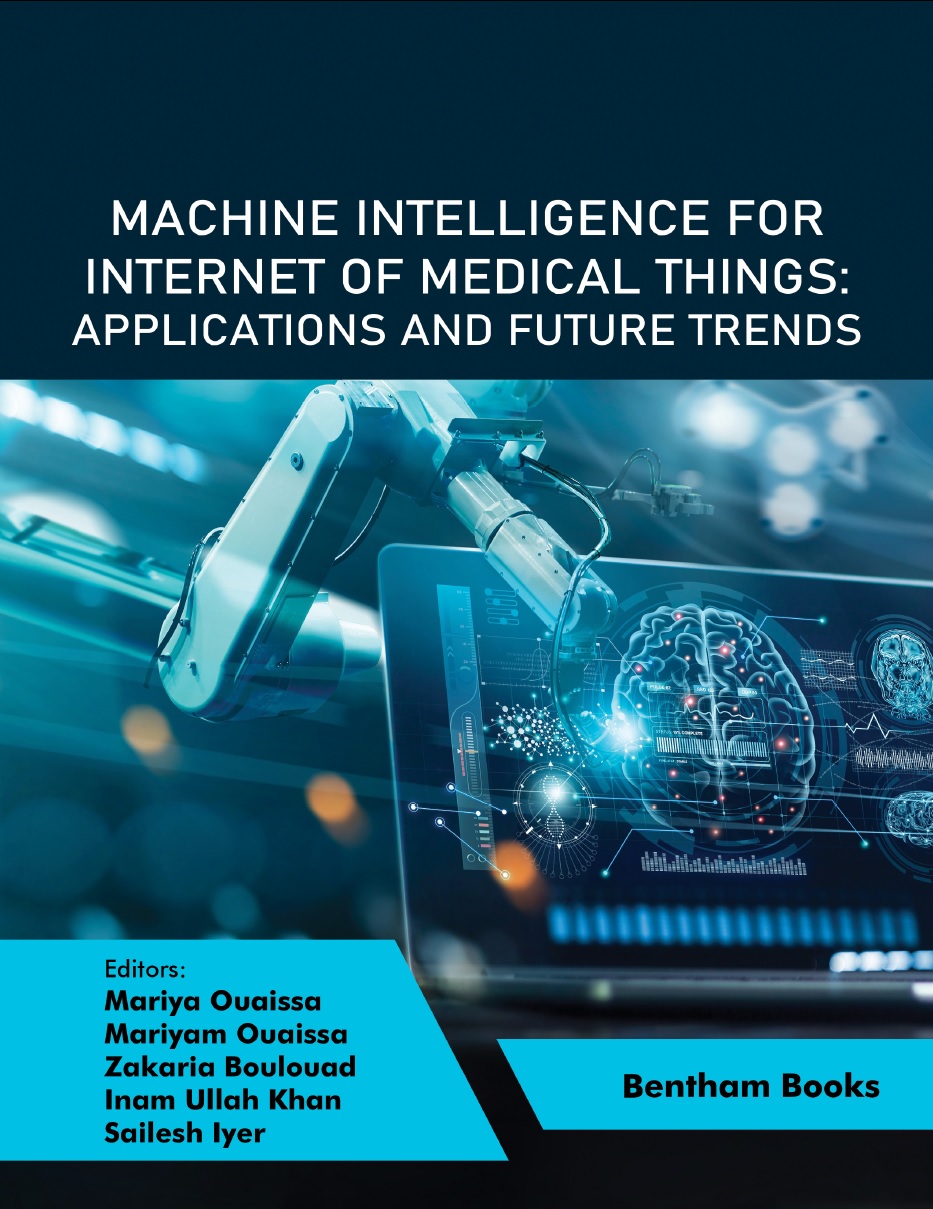- Home
- Publishers
- Bentham Science Publishers
Bentham Science Publishers
Bentham Science Publishers is a major publisher of more than 100 peer-reviewed science, technology and medical (STM) journals, along with a rapidly growing collection of eBooks. Since 1993, Bentham Science Publishers has been catering to the information needs of the pharmaceutical, engineering, biomedical and medical research community.451 - 500 of 812 results
-
-
Illustrated Pediatric Dentistry - Part 3
More LessIllustrated Pediatric Dentistry is intended to be a guide to undergraduate and postgraduate students in their understanding of pediatric dentistry. This textbook is modernized with the latest information and techniques in pediatric dentistry. The chapters cover primary pediatric dentistry, its clinical aspects, preventive dentistry, and information about the latest trends in the specialty. The text will equip readers with the knowledge suited to the changing environment of this vital domain. This textbook's editor has over forty-four years of teaching experience in pediatric dentistry and gives their broad perspective through the book content. This book is also the amalgamation of the thoughts of numerous subject experts of international repute. Part 3 covers several topics relevant to practical dentistry such as, pediatric crowns, prosthetic management, pental pulp, pediatric endodontics, (including regenerative medicine and instruments), traumatic dental injuries, sports dentistry, Systemic Fluorides, (like SDF) and pit and fissure sealants. Special topics like fental caries vaccine and post-COVID dental practice round up this book. Key Features: - The 18, structured chapters keep the latest trends of the subject in mind - The book content is illustrated with quality clinical images, - Chapters cover contemporary concepts of problems experienced when treating multiple dental disorders - The contributions exhibit distinct clinical expertise and the capability of imparting inimitable knowledge to budding professionals - The book includes modern and current state-of-the-art techniques used in the clinic Topic outlines help to quickly review and easily locate content. Also, the Contents of the book are well structured and presented in a very lucid manner, making it easy to understand for students.
-
-
-
Illustrated Pediatric Dentistry - Part 4
More LessThis textbook presents the latest information and techniques in pediatric dentistry. The chapters cover primary pediatric dentistry, its clinical aspects, preventive dentistry, and information about the latest trends in the specialty. The text will equip readers with the knowledge suited to the changing environment of this vital domain. This textbook's editor has over forty-four years of teaching experience in pediatric dentistry and gives a broad perspective through the book content. This book is also an amalgamation of the knowledge brought forth by numerous subject experts of international repute. Part 4 covers specialized topics for clinical practice that professionals need to understand. The book covers drugs in pediatric dentistry, anesthesia, dental surgery, implants and lasers. Special topics like the management of special needs children and HIV/AIDs patients, new advances and genetics are also covered in this part. Key Features: - The 16, structured chapters keep the latest trends of the subject in mind - The book content is illustrated with quality clinical images - Chapters cover contemporary concepts of problems experienced when treating multiple dental disorders - The contributions exhibit distinct clinical expertise and the capability of imparting inimitable knowledge to budding professionals - The book includes state-of-the-art techniques used in the clinic Topic outlines help to quickly review and easily locate content. Also, the Contents of the book are well structured and presented in a very lucid manner, making it easy to understand for students.
-
-
-
Image Processing in Renewable Energy Resources: Opportunities and Challenges
More LessThis book is a compilation of innovative work on image processing applications for renewable energy systems. The chapters in the book describe the use of neural networks in multi-direction dynamic, topographical data frameworks which are designed to account for the distinctive contemporary issues faced when managing environmentally friendly power generation systems.
The topics covered include uncertainty analysis methods, computing technologies, automated control systems, performance analysis, riverfront analysis through image processing and solar power estimation methods, to name a few. The information is also complemented with a review of problems in the electric power sector in India.
This book is beneficial for professionals and researchers who work on hybrid techniques of GIS, remote sensing, image processing and the implementation of these techniques for utilizing renewable energy resources. Engineers who work on advanced algorithms for renewable energy applications will also get an updated perspective about relevant innovations in this industrial sector.
-
-
-
Immunology, Endocrine & Metabolic Agents in Medicinal Chemistry (Formerly Current Medicinal Chemistry - Immunology, Endocrine and Metabolic Agents)
More LessImmunology, Endocrine & Metabolic Agents in Medicinal Chemistry aims to cover all the latest and outstanding developments in the medicinal chemistry and rational drug design for the discovery of new Immunology, Endocrine & Metabolic Agents. Each issue contains a series of timely in-depth reviews written by leaders in the field covering a range of current topics in Immunology, Endocrine & Metabolic medicinal chemistry.
Immunology, Endocrine & Metabolic Agents in Medicinal Chemistry is an essential journal for every medicinal chemist who wishes to be kept informed and up-to-date with the latest and most important developments in Immunology, Endocrine & Metabolic drug discovery.
-
-
-
In Memory of Ethics: A Dissection of Ethical and Social Issues in Pakistani Professional Healthcare Practice
More LessIn Memory of Ethics: A Dissection of Ethical and Social Issues in Pakistani Professional Healthcare Practice explores the ethical challenges faced within the healthcare sector with a focus on Pakistan. From workplace behaviors to medical procedures, COVID-19 era dilemmas, and broader social health concerns, the book explores the intricate intersection of ethics and healthcare in the region.
The book is divided into five sections. Section I covers topics such as workplace behaviors and ethical conducts while section II covers medical procedures, and patient-doctor relationships. Section III addresses the unique ethical challenges brought forth by the COVID-19 pandemic, including guidelines for therapists and the ethics of mandatory vaccinations. Section IV examines the impact of social media on healthcare, gender discrimination, and the ethical considerations surrounding prisoner rehabilitation. The final section offers insightful essays on ethical and social Issues, covering topics like body shaming, free healthcare, and patient privacy. The editors also explore controversial topics, including euthanasia, abortion, and assisted reproductive technology.
The key feature of this book is that it provides a comprehensive coverage of diverse ethical dilemmas in healthcare. Furthermore, it is an attempt to give a subjective understanding of healthcare ethics through thought-provoking essays shedding light on contemporary ethical issues in a Pakistani context. The contributors have incorporated real-world examples and case studies to illustrate ethical principles in action.
In Memory of Ethics: A Dissection of Ethical and Social Issues in Pakistani Professional Healthcare Practice book is essential reading for anyone interested in understanding complex ethical and social issues and promoting integrity in healthcare practices.
-
-
-
In Vitro Propagation and Secondary Metabolite Production from Medicinal Plants: Current Trends (Part 1)
More LessThis book is a comprehensive review of secondary metabolite production from plant tissue culture. The editors have compiled 12 meticulously organized chapters that provide the relevant theoretical and practical frameworks in this subject using empirical research findings. The goal of the book is to explain the rationale behind in vitro production of secondary metabolites from some important medicinal plants. Biotechnological strategies like metabolic engineering and the biosynthesis, transport and modulation of important secondary metabolites are explained along with research studies on specific plants. In addition to the benefits of secondary metabolites, the book also aims to highlight the commercial value of medicinal plants for pharmaceutical and healthcare ventures. Topics covered in this part include: 1. Elicitation Strategies and Metabolic Engineering to boost metabolite production with case studies in metabolic engineering with examples of Scaevola Taccada and Catharanthus Roseus. 2. Stress response investigation and the role of glandular trichomes as bio-cell factories 3. Plant growth regulators and rapid regeneration techniques using swift plantlets regeneration and phytochemical characterization 4. Nutraceuticals, antimicrobials, and genomic applications of in vitro cultures with an example of Hassawi rice and its genomics 5. Sustainable approaches for saving endangered medicinal plants The book caters to a wide readership. It primarily prepares graduate students, researchers, biotechnologists, giving them a grasp of the key methodologies in the secondary metabolite production. It is a secondary reference for support executives, industry professionals, and policymakers at corporate and government levels to understand the importance of plant tissue culture and maximizing its impact in the herbal industry.
-
-
-
In Vitro Propagation and Secondary Metabolite Production from Medicinal Plants: Current Trends (Part 2)
More LessThis book is a comprehensive review of secondary metabolite production from plant tissue culture. The editors have compiled 12 meticulously organized chapters that provide the relevant theoretical and practical frameworks in this subject using empirical research findings. The goal of the book is to explain the rationale behind in vitro production of secondary metabolites from some important medicinal plants. Biotechnological strategies like metabolic engineering and the biosynthesis, transport and modulation of important secondary metabolites are explained along with research studies on specific plants. In addition to the benefits of secondary metabolites, the book also aims to highlight the commercial value of medicinal plants for pharmaceutical and healthcare ventures.
Topics covered in this part include:
1. In vitro propagation and tissue culture for several plants including Withania somnifera (L.) Dunal, Aloe vera, Oroxylum indicum (L) Kurz, Ocimum basilicum L, Rhubarb, Tea, and many others (including plants in Northern India).
2. Genetic Improvement of Pelargonium
3. Bioactive Components in Senna alata L. Roxb
4. Plant tissue culture techniques
The book caters to a wide readership. It primarily prepares graduate students, researchers, biotechnologists, giving them a grasp of the key methodologies in the secondary metabolite production. It is a secondary reference for support executives, industry professionals, and policymakers at corporate and government levels to understand the importance of plant tissue culture and maximizing its impact in the herbal industry.
-
-
-
In-Silico and In-Vitro Approaches to Screen the Antituberculosis Activity of Benzothiazole Analogs
More LessThis monograph presents information about the history and evolution of tuberculosis treatment, and the potential of the benzothiazole moiety for anti-tuberculosis (anti-TB) activity. The book introduces the reader to basic information about benzothiazole as a drug candidate before delving into the anti-tubercular properties of derivative compounds in subsequent chapters. The contributors explain quantitative structural-activity relationships of benzothiazole with anti-TB activity along with the importance of in-silico (computer aided) techniques in the drug design process. This is followed by a chapter which details Mycobacterium tuberculosis biology, strains as well as symptoms of tuberculosis infections. The book then explains in-vitro and in-vivo methods used to evaluate drug efficacy against tuberculosis along with the synthesis and anti-TB activity of the benzothiazole derivatives (benzothiazole diamide, benzothiazole guanidinyl derivatives and benzothiazole conjugated pyrazole derivatives).
This book, therefore, is a quick reference on TB diseases, methods of in-silico and in-vitro screening of anti-TB drugs and the importance of the benzothiazole in TB treatment regimens. The book is suitable for readers, researchers and post graduate students who are interested in general tuberculosis drug design, screening and discovery, as well as the application of benzothiazole as an anti-TB drug.
-
-
-
Indicator Displacement Assays (IDAs): An Innovative Molecular Sensing Approach
More LessThis book explores a revolutionary sensing technique called Indicator Displacement Assays (IDAs). It is designed to provide readers with a comprehensive understanding of the conceptual foundation and wide-ranging applications of IDAs. The book aims to fulfill a crucial gap in the existing references on the subject.
The content starts by explaining fundamental concepts, design strategies, and the scope of IDAs. Subsequent chapters elaborate on the intricate molecular recognition of various analytes, offering insights into sensing mechanisms for cationic, anionic, and neutral molecules. The design and construction of colorimetric, fluorescence, and metal complexing IDAs are also thoroughly explored in later chapters, followed by recent extensions of IDAs, including enantioselective indicator displacement assays, intramolecular indicator displacement assays, reaction-based indicator displacement assays, and more. Innovative applications of IDAs, such as sensory arrays and electrochemical sensors, are also discussed in detail, providing a comprehensive understanding of their conceptual foundations and practical implementations.
The book is a primer on IDAs for researchers who want to understand the fundamentals of the technique, as well as postgraduate students aiming to specialize in supramolecular and analytical chemistry.
-
-
-
Indopathy for Neuroprotection: Recent Advances
More LessDegenerative nerve diseases are age-related, progressive and cause irreversible neurological loss that may lead to death. Chronic diseases like amyotrophic lateral sclerosis, Huntington's disease, Alzheimer's disease, and Parkinson's disease are associated with insoluble protein depositions and pose serious health challenges that may intensify in the coming decades. Current therapies only help to alleviate some of the physical or mental symptoms associated with neurodegenerative diseases, although there is currently no remedy for slow disease progression. In recent years, attempts have been made to discover a mechanism for neurodegenerative diseases and prospective treatment that may help mitigate aging effects and prevent these diseases. Natural products have been a constant source of new approaches for the treatment of neurodegenerative diseases, in particular plant alkaloids and polyphenolic compounds.
Indopathy for Neuroprotection: Recent Advances highlights herbal treatments that are preferred over conventional treatments in some regions. Book chapters focus on the effects of various medicinal plants that have shown promise in reversing pathological symptoms of neurodegenerative disease and highlight the neuroprotective role of medicinal herbal phytochemicals and their mechanism of action. The book serves as a reference for pharmacology and herbal medicine scholars as well as healthcare workers interested in information about alternative and complementary therapies for neurological disorders.
-
-
-
Induction Motor Computer Models in Three-Phase Stator Reference Frames: A Technical Handbook
More LessThis book is a compilation of knowledge about computer models in the three-phase stator reference frame. Chapters explore several aspects of the topic and build upon research previously presented by contributors. The book aims to provide interesting solutions to problems encountered in the design of railway and analysis in railway motors. The modeling approaches proposed by the authors in this book may become an incentive for readers and researchers to develop their lifehacks to solve new problems in induction motor design and testing.
Key topics presented in the book:
- Approximate calculations of induction motor equivalent T-shaped circuit parameters with the use of catalogue data
- Simulations of different types of shaft load, including fluid coupling
- Receiving static characteristics of an electric machine during simulation by means of dynamic model
- Simulation of the electric drives specific applications with three-phase induction motors building
- Direct start of an induction motor as part of an auxiliary drive of an AC electric locomotive, containing a capacitor phase splitter, starting with different types of shaft loads (fan or compressor).
Special attention has been given to the description of the thermal model of an induction motor with a squirrel-cage rotor, which makes it possible to simulate operating modes when powered by an unbalanced voltage, as well as with squirrel cage defects. The thermal model is presented as a detailed superstructure to the model of electromechanical processes of an induction electric machine.
Other key features of the book include references for further reading, an appendix for the parameters of the equivalent thermal circuit of an NVA-55 induction motor.
The material presented in the book is of interest to railway motor engineers, specialists in electromechanics and electric drives who use SPICE-compatible CAD applications in their work.
-
-
-
Industrial Applications of Polymer Composites
Frontiers in Polymer Science: Volume 1
More LessThis volume is a comprehensive guide to the industrial use of polymer composites. Edited contributions demonstrate the application of these materials for different industrial sectors. The book covers the benefits, future potential, and manufacturing techniques of different types of polymers. Contributors also address challenges in using nanopolymers in these industries. Readers will find valuable insights into the current demand and supply of polymer composites and future scope for research and development in this field of polymer science. The volume presents seven chapters, each exploring a different application of polymer composites. Chapter 1 discusses the use of polymer additives for improving classical concrete and the workability and durability of polymer composite concrete. Chapter 2 explores the use of polymer nanocomposites in packaging, including smart/intelligent packaging, modified atmosphere packaging, and vacuum packaging. Chapter 3 delves into the use of polymer composites in tissue engineering, including manufacturing techniques and various applications. Chapter 4 explores energy storage applications for polymer composites, while Chapter 5 discusses their use in microbial fuel cells. Chapter 6 explores the use of carbon nanotubes in polymer composite gas sensors. Finally, Chapter 7 discusses the use of polymer composites in automotive applications. This is an ideal reference for researchers, scientists, engineers, and professionals in the fields of materials science, polymer science, engineering, and nanotechnology. The content is also suitable for graduate and postgraduate students studying industrial manufacturing.
-
-
-
Industrial Applications of Soil Microbes
More LessThis volume is a compilation of reviews on the industrial usage of soil microorganisms. The contents include 16 brief reviews on different soil microbe assisted industrial processes. Readers will be updated about recent applications of soil bacteria, fungi and algae in sectors such as agriculture, biotechnology, environmental management.
The reviews also cover special topics like sustainable agriculture, biodiversity, ecology, and intellectual property rights of patented strains, giving a broad perspective on industrial applications of soil microbes.
Volume 3 emphasizes various soil microorganisms including cyanobacteria and mycorrhiza. The 16 chapters cover the ecological significance of mycorrhiza to and their role in sustainable agriculture, microbial interactions with nematodes, microbes as biocontrol agents, and the use of endophytes in agriculture, Chapters also shed light on industrial aspects and microbial biotransformation, providing a comprehensive view of sustainable agricultural practices. Special topics such as the microbial carotenoids are also included.
-
-
-
Industrial Applications of Soil Microbes: Volume 1
More LessThis volume is a compilation of reviews on the industrial usage of soil microorganisms. The contents include 15 brief reviews on different soil microbe assisted industrial processes. Readers will be updated about recent applications of soil bacteria, fungi and algae in sectors such as agriculture, biotechnology, environmental management.
The reviews also cover special topics like sustainable agriculture, biodiversity, ecology, and intellectual property rights of patented strains, giving a broad perspective on industrial applications of soil microbes. The text is easy to understand for readers of all levels, with references provided for the benefit of advanced readers.
-
-
-
Industrial Applications of Soil Microbes: Volume 2
More LessThis volume is a compilation of reviews on the industrial usage of soil microorganisms. The contents include 16 brief reviews on different soil microbe assisted industrial processes. Readers will be updated about recent applications of soil bacteria, fungi and algae in sectors such as agriculture, biotechnology, environmental management.
The reviews also cover special topics like sustainable agriculture, biodiversity, ecology, and intellectual property rights of patented strains, giving a broad perspective on industrial applications of soil microbes.
Volume 2 includes reviews on destructive microbes like Macrophomina Phaseolina, eco-friendly microbes like Beauveria Bassiana, the identification of fungi in the rhizosphere, the industrial application of Trichoderma, and other topics. The text is easy to understand for readers of all levels, with references provided for the benefit of advanced readers.
-
-
-
Infectious Diseases
Herbal Medicine: Back to the Future: Volume 6
More LessHerbal Medicine: Back to the Future compiles expert reviews on the application of herbal medicines (including Ayurveda, Chinese traditional medicines and alternative therapies) to treat different ailments. The book series demonstrates the use of sophisticated methods to understand traditional medicine, while providing readers a glimpse into the future of herbal medicine.
This volume presents reviews of plant based therapies useful for treating different infectious diseases. The reviews highlight different sources of antiviral, antibacterial and antifungal herbs. The volume concludes with a review on the therapeutic potential of herbs for treating rheumatoid arthritis. The chapters included in this volume are as follows:
- Brazilian Siparuna species as a Source of antiviral agents
- Antimicrobial and antifungal potential of Indian spices
- Role of herbal medicines in the treatment of infectious diseases
- Herbal medicine: traditional approach to treat infectious diseases
- Exploring the therapeutic potential of medicinal plants for rheumatoid arthritis
This volume is essential reading for all researchers in the field of natural product chemistry and pharmacology. Medical professionals involved in internal medicine who seek to improve their knowledge about herbal medicine and alternative therapies for tropical and other infectious diseases will also benefit from the contents of the volume.
-
-
-
Infectious Disorders - Drug Targets (Formerly Current Drug Targets - Infectious Disorders)
More LessInfectious Disorders - Drug Targets aims to cover all the latest and outstanding developments in medicinal chemistry, pharmacology, molecular biology, genomics and biochemistry of contemporary molecular targets involved in infectious disorders e.g. disease specific proteins, receptors, enzymes and genes. Each issue of the journal contains a series of timely in-depth reviews/mini-reviews and research articles written by leaders in the field covering a range of current topics on drug targets involved in infectious disorders. As the discovery, identification, characterization and validation of novel human drug targets for anti-infective drug discovery continue to grow, this journal will be essential reading for all pharmaceutical scientists involved in drug design, discovery and development. All aspects related to viral or bacterial diseases including HIV, AIDS and other sexually transmitted diseases (STDs) are also included in the scope of the journal.
-
-
-
Inflammation & Allergy-Drug Targets (Formerly Current Drug Targets - Inflammation & Allergy) (Discontinued)
More LessInflammation & Allergy - Drug Targets aims to cover all the latest and outstanding developments on the medicinal chemistry, pharmacology, molecular biology, genomics and biochemistry of contemporary molecular targets involved in inflammation and allergy e.g. disease specific proteins, receptors, enzymes, genes. Each issue of the journal contains a series of timely in-depth reviews written by leaders in the field covering a range of current topics on drug targets involved in inflammation and allergy. As the discovery, identification, characterization and validation of novel human drug targets for anti-inflammation and allergy drug discovery continues to grow, this journal has become essential reading for all pharmaceutical scientists involved in drug discovery and development.
-
-
-
Intelligent Diagnosis of Lung Cancer and Respiratory Diseases
Intelligent Systems in Radiology: Volume 1
More LessIntelligent Diagnosis of Lung Cancer and Respiratory Diseases presents information about diseases of the respiratory system and the relevant diagnostic imaging techniques. The book focuses on intelligent diagnostic imaging systems.
The first section of the book deals with the physiological underpinnings of 3 major diseases that affect the respiratory system: tuberculosis, lung cancer and COVID-19. This section also explains the basic principles of artificial Intelligence that support the diagnosis of these diseases.
The next section presents applications of intelligent systems to support the imaging diagnosis of COVID-19 and lung cancer, with emphasis on digital health and telemedicine approaches.
Each chapter is organized into a readable format, and is accompanied with a detailed bibliographical information for further reading.
This book is a reference for everyone seeking to understand how artificial intelligence can provide solutions for diagnostic support systems by processing and analyzing radiological images to improve early diagnosis and, consequently, lung disease prognosis.
-
-
-
Intelligent Systems for IoE Based Smart Cities
More LessIntelligent Systems for IoE Based Smart Cities provides simplified information about complexities of cyber physical systems, the Internet of Everything (IoE) and smart city infrastructure. It presents 11 edited chapters that reveal how intelligent systems and IoE are driving the evolution of smart cities, making them more efficient, interconnected, and responsive to the needs of citizens.
The book content represents comprehensive exploration of the transformative potential and challenges of IoE-based smart cities, fueled by Artificial Intelligence (AI) and Machine Learning (ML) innovations.
Key Topics:
Physical layer design considerations that underpin smart city infrastructure
Enabling technologies for intelligent systems within the context of smart computing environments
Smart sensors and actuators, their applications, challenges, and future trends in IoE-based smart cities
Applications, enabling technologies, challenges, and future trends of IoE for smart cities.
The integration of Artificial Intelligence, Natural Language Processing, and smart cities for enhanced urban experiences
machine learning-based intrusion detection techniques for countering attacks on the Internet of Vehicles
Smartphone-based indoor positioning applications using trilateration and the role of sensors in IoT ecosystems
IoT, blockchain, and cloud-based technology for secure frameworks and data analytics
Blockchain and smart contracts in shaping the future of smart cities.
This is a timely reference for researchers, professionals, and students interested in the convergence of IoT, intelligent systems and urban studies into smart city planning and design.
-
-
-
Intelligent Technologies for Automated Electronic Systems
Advanced Technologies for Science and Engineering
More LessThis volume explores a diverse range of applications for automated machine learning and predictive analytics. The content provides use cases for machine learning in different industries such as healthcare, agriculture, cybersecurity, computing and transportation.
Chapter 1 introduces an innovative device for automatically notifying and analyzing the impact of automobile accidents. Chapter 2 focuses on the detection of malaria using systematized image processing techniques. In Chapter 3, an intelligent technique based on LMEPOP and fuzzy logic for the segmentation of defocus blur is discussed. Predictive analytics is introduced in Chapter 4, providing an overview of this emerging field. Chapter 5 delves into discrete event system simulation, offering insights into its applications.
The performance analysis of different hypervisors in OS virtualization is explored in Chapter 6. Load balancing in cloud computing is the subject of investigation in Chapter 7. Chapter 8 presents a survey on a facial and fingerprint-based voting system utilizing deep learning techniques. Chapter 9 explores IoT-based automated decision-making with data analytics in agriculture. Biometric recognition through modality fusion is investigated in Chapter 10. Chapter 11 offers a new perspective on evaluating machine learning algorithms for predicting employee performance. Pre-process methods for cardiovascular diseases diagnosis using CT angiography images are discussed in Chapter 12. Chapter 13 presents the implementation of a smart wheelchair using ultrasonic sensors and LabVIEW.
Cryptography using the Internet of Things is the focus of Chapter 14. Chapter 15 explores machine learning applications for traffic sign recognition, and the book concludes with Chapter 16, which analyzes machine learning algorithms in healthcare.
The book is a resource for academics, researchers, educators and professionals in the technology sector who want to learn about current trends in intelligent technologies.
-
-
-
Intelligent Technologies for Research and Engineering
Advanced Technologies for Science and Engineering: Volume 3
More LessThis volume explores diverse applications for automated machine learning and predictive analytics. The content provides use cases for machine learning in different industries such as healthcare, agriculture, cybersecurity, computing and transportation.
Key highlights of this volume include topics on engineering for underwater navigation, and computer vision for healthcare and biometric applications.
Chapters 1-4 delve into innovative signal detection, biometric authentication, underwater AUV localization, and COVID-19 face mask detection. Chapters 5-9 focus on wireless pH sensing, differential pattern identification, economic considerations in off-grid hybrid power, high optimization of image transmission, and ANN-based IoT-bot traffic detection. Chapters 10-12 cover mixed-signal VLSI design, pre-placement 3D floor planning, and bio-mimic robotic fish. Finally, Chapters 13 and 14 explore underwater robotic fish and IoT-based automatic irrigation systems, providing a comprehensive overview of cutting-edge technological advancements.
The book is a resource for academics, researchers, educators and professionals in the technology sector who want to learn about current trends in intelligent technologies.
-
-
-
Intelligent Technologies for Scientific Research and Engineering
More LessThis reference is a compilation of work from different technology groups that give an insight into strategies used for technology optimization and technical R&D. Each of the 14 chapters presented in the book are contributed by engineering experts and focus on different aspects of smart technologies. The chapters cover a wide range of technical disciplines with a list of references for further reading. The compilation demonstrates methods that are useful to apprentices and researchers involved in the development of technologies in different fields: & Wireless networking & Signal processing & Control and machine engineering & SOC design & Materials science and nanotechnology & Biomedical engineering & Power electronics The contributions in this book provide interesting examples for product development such as custom nanomaterials, digital electronics, smart devices and antennas. The content also serves as a reference for designing special components used for complex systems like wireless communication systems, automated control systems and organic waste processing systems. The content is structured in a format suitable for both learners and advanced researchers, making this reference essential to engineers at all levels.
-
-
-
International Journal of Sensors Wireless Communications and Control
More LessInternational Journal of Sensors, Wireless Communications and Control publishes timely research articles, full-length/ mini reviews and communications on these three strongly related areas, with emphasis on networked control systems whose sensors are interconnected via wireless communication networks.
The emergence of high speed wireless network technologies allows a cluster of devices to be linked together economically to form a distributed system. Wireless communication is playing an increasingly important role in such distributed systems. Transmitting sensor measurements and control commands over wireless links allows rapid deployment, flexible installation, fully mobile operation and prevents the cable wear and tear problem in industrial automation, healthcare and environmental assessment. Wireless networked systems has raised and continues to raise fundamental challenges in the fields of science, engineering and industrial applications, hence, more new modelling techniques, problem formulations and solutions are required.
-
-
-
Introduction to Advanced Soft Robotics
Frontiers in Electrical Engineering: Volume 2
More LessIntroduction to Advanced Soft Robotics is an introductory textbook on soft body robotics. The content is designed to enable readers to better understand soft body robotics. Starting with an introduction to the subject, contents explain fundamental concepts such as perception and sensing, fabrication techniques and material design. These introductory chapters demonstrate the design concept and related design structures of soft robots from multiple perspectives, which can provide considerable design references for robotics learners and enthusiasts. Next, the book explains modeling and control for soft robotics and the applications. Key features of this book include easy-to-understand language and format, simple illustrations and a balanced overview of the subject (including a section on challenges and future prospects for soft robotics), and scientific references.
-
-
-
Introduction to Machine Learning with Python
More LessMachine learning is a subfield of artificial intelligence, broadly defined as a machine's capability to imitate intelligent human behavior. Like humans, machines become capable of making intelligent decisions by learning from their past experiences. Machine learning is being employed in many applications, including fraud detection and prevention, self-driving cars, recommendation systems, facial recognition technology, and intelligent computing. This book helps beginners learn the art and science of machine learning. It presens real-world examples that leverage the popular Python machine learning ecosystem,
The topics covered in this book include machine learning basics: supervised and unsupervised learning, linear regression and logistic regression, Support Vector Machines (SVMs). It also delves into special topics such as neural networks, theory of generalisation, and bias and fairness in machine learning. After reading this book, computer science and engineering students - at college and university levels - will receive a complete understanding of machine learning fundamentals and will be able to implement neural network solutions in information systems, and also extend them to their advantage.
-
-
-
Introduction to Molecular Genomics
More LessIntroduction to Molecular Genomics introduces the college student to the fundamental concepts of molecular biology and genomics. The text puts an emphasis on important topics in the subject that contribute to the learners understanding. These topics include molecular genomics, biodiversity and molecular phenomenon behind evolution of species, modern molecular methods for enhanced genomics research, DNA modifications at the molecular level for transgenic animal species, the role of cell environment on the gene expression, to name a few. The book has been designed to suit the requirements of educational courses in molecular biology, genomics and biochemistry.
Key features
- Covers basic concepts on key topics in molecular biology and genomics
- Simple easy-to-read layout
- Includes references for further reading
- Includes a section on ethical aspects of scientific research
Introduction to Molecular Genomics is a simple primer for students in applied or advanced life science courses at undergraduate levels
-
-
-
Introduction to Sensors in IoT and Cloud Computing Applications
More LessIntroduction to Sensors in IoT and Cloud Computing Applications provides information about sensors and their applications. Readers are first introduced to the concept of small instruments and their application as sensors. The chapters which follow explain Internet of Things (IoT) architecture while providing notes on the implementation, demonstration and related issues of IoT systems. The book continues to explore the topic by providing information about sensor-cloud infrastructure, mobile cloud, fog computing (an extension of cloud computing that takes cloud computing to the cutting-edge of networking where data is produced) and integration of IoT devices with cloud computing. The book also presents notes on the taxonomy of fog-computing systems. The six chapters in this book provide essential information for general readers, and students of computer science to understand the basics of cloud computing networks, related concepts and applications.
-
-
-
Introductory Statistical Procedures with SPSS
More LessSPSS is beneficial for students and researchers in psychology, sociology, psychiatry, and other behavioural sciences, as it performs a wide range of univariate and multivariate operations commonly used in these fields.
Introductory Statistical Procedures with SPSS is an easy to use textbook that presents the core concepts of statistical theory with applications in SPSS. The goal of this book is to give learners simple and clear instructions on how to use recent versions of SPSS, to perform a range of statistical studies. The book chapters explain elementary statistics (descriptive and inferential) giving a detailed understanding of the discussed topics. Each chapter focuses on a specific type of analytical procedure that can be used to understand a wide range of data sets, the majority of which are from the social and behavioural sciences.
Key Features:
- Simple and clear instructions to use SPSS (Version 21) in 10 chapters
- Introduces the reader to core descriptive statistical and probability measures - Covers inferential statistics
- Covers regression and correlation analysis
- Covers multivariate statistics
- Presents many illustrative examples and theoretical problems at the end of each chapter with real-life data
Introductory Statistical Procedures with SPSS is an essential guide for anyone who is interested in learning statistical applications of SPSS. Readers with no prior knowledge of statistics, students at all academic levels and professionals alike will benefit from the information in this text book.
-
-
-
Introductory Statistics
More LessThis textbook is a primer for students on statistics. It covers basic statistical operations, an introduction to probability, distributions and regression. The book is divided into a series of 10 chapters covering a basic introduction to common topics for beginners. The goal of the book is to provide a sufficient understanding of how to organize and summarize datasets through descriptive and inferential statistics for good decision-making. A chapter on ethics also informs readers about best practices for using statistics in research and analysis. Topics covered: 1. Introduction to Statistics 2. Summarizing and Graphing 3. Basic Concepts of Probability 4. Discrete Random Variables 5. Continuous Random Variables 6. Sampling Distributions 7. Estimation 8. Hypothesis Testing 9. Correlation and Regression 10. Ethics
-
-
-
IoT-enabled Sensor Networks: Architecture, Methodologies, Security, and Futuristic Applications
Advances in Computing Communications and Informatics
More LessThis volume explores IoT architectures, their configuration, and operability in wireless sensor networks.
The topics are spread across nine structured chapters covering fundamental and applied knowledge about wireless sensor networks using IoT devices. The book starts with an introduction to the subject, giving readers a quick overview of IoT enabled networks and bio-inspired approaches towards network design. This is followed by chapters explaining optimized routing protocols for accident detection, efficiency and performance analysis. The book concludes with four chapters dedicated to security applications of wireless networks, for homes, urban areas and businesses. Overall, the volume gives a balance of theoretical and practical information for readers.
The book is intended as a resource for graduate and postgraduate students for understanding network design for home and embedded applications, specifically using single board computing devices. It also serves as a guide for networking courses and assessments.
-
-
-
Ionic Liquids: Eco-friendly Substitutes for Surface and Interface Applications
More LessIonic Liquids: Eco-friendly Substitutes for Surface and Interface Applications explores the growing interest in utilizing ionic liquids as sustainable alternatives for various industrial and biological applications. With their unique properties and environmentally friendly nature, ionic liquids have emerged as promising substitutes for toxic and volatile solvents, offering significant advantages in surface and interface chemistry.
This book is divided into two parts: Part 1 covers the basics of ionic liquids, their surface/interface properties, and interactions with metallic surfaces. Part 2 focuses on the wide range of surface and interface applications of ionic liquids, including wastewater treatment, corrosion protection, catalysis, separation processes, medical devices, and sensing applications.
Key Features:
A complete book fully dedicated to the surface and interface chemistry of ionic liquids with seventeen chapters
Covers fundamentals, recent progress, and applications in surface/interface chemistry
Presents up-to-date research and interdisciplinary insights
Includes relevant references and resources for further exploration
This is a valuable reference for scientists and engineers who want to learn about ionic liquids' chemistry and applications
-
-
-
Journal of Current Toxicology and Venomics
Formerly as Venoms and Toxins
More LessJournal of Current Toxicology and Venomics publishes original research articles, letters, case reports, comprehensive in-depth reviews/mini-reviews, and guest-edited thematic issues in various fields of Toxicology and Venomics. Journal of Current Toxicology and Venomics is not limited to a specific field but instead covers all major fields of Toxicology and Venomics.
-
-
-
Journal of Fuzzy Logic and Modeling in Engineering
More Lesshe purpose of the Journal of Fuzzy Logic and Modeling in Engineering is to publish recent advancements in the theory of fuzzy sets and disseminate the results of these advancements. The journal focuses on the disciplines of industrial engineering, control engineering, computer science, electrical engineering, mechanical engineering, civil engineering, management engineering and others. The scope of the journal involves fuzzy theory and applications in every branch of science and technology.
Original research articles and reviews in the following areas of the fuzzy set theory are of special interest to the readers of this journal:- Computing with Words and Granular Computing
- Extensions of fuzzy sets: intuitionistic fuzzy sets, hesitant fuzzy sets, neutrosophic sets, spherical fuzzy sets.
- Fuzzy Clustering
- Fuzzy Control
- Fuzzy Data Analysis, Fuzzy Clustering, Classification and Pattern Recognition
- Fuzzy Database
- Fuzzy Decision Making and Decision Support Systems
- Fuzzy Expert System
- Fuzzy Logic Systems
- Fuzzy Logic Techniques and Algorithms
- Fuzzy Mathematical Programming
- Fuzzy Mathematics
- Fuzzy Measure and integral
- Fuzzy Neural Systems, Neuro-Fuzzy Systems
- Fuzzy Pattern Recognition
- Fuzzy Process Control
- Fuzzy Reasoning System
- Fuzzy Sets in Bioinformatics
- Fuzzy System Applications in Computer Vision
- Fuzzy System Applications in E-commerce
- Fuzzy System Applications in Human-Machine Interface
- Fuzzy System Applications in Robotics, Sensors, Fuzzy Hardware and Architectures
- Fuzzy System in Multimedia and Web-Based Applications
- Fuzzy Systems Design and Optimization
- Fuzzy Systems Modeling and Identification
- Fuzzy Systems with Big Data and Cloud Computing, Fuzzy Analytics and Visualization
- Fuzzy-Rule Based System
- Hybrid Fuzzy Systems (fuzzy-neuro-evolutionary-rough)
- Possibility Theory and Imprecise Probabilit
-
-
-
Journal of Intelligent Systems in Current Computer Engineering
Formerly as Journal of Fuzzy Logic and Modeling in Engineering
More LessThe aim of the Journal of Intelligent Systems in Current Computer Engineering is to publish recent advancements in the interdisciplinary fields of intelligent systems applied to computer engineering. The scope of the journal involves intelligent modelling techniques and applications in every branch of computer engineering.
Original research articles and reviews in the following areas of intelligent systems in the field of computer engineering are of special interest to the readers of this journal:- Big Data
- Cloud Computing
- Computer Vision
- Cybersecurity
- Data Mining
- Digital Twins
- Expert Systems
- Fuzzy logic
- Fuzzy Set Extensions
- Heuristics
- Intelligent Agents
- Internet of Things
- Logical reasoning
- Machine Learning and Deep Learning
- Metaheuristics
- Natural Language Processing (NLP)
- Reinforcement Learning
- Robotics and Autonomous Systems
- Support Vector Machines
-
-
-
Journal of Photocatalysis
More Less“Journal of Photocatalysis” would publish high quality research papers, reviews, and short communications focused on photocatalysis from many different scientific areas including Chemistry, Chemical Engineering, Materials Science, Materials Engineering, Environmental Engineering, Nanotechnology and Green Chemistry.
“Journal of Photocatalysis” would accept novel papers in the following fields:- Preparation and characterization of new photocatalyst.
- Photocatalytic elimination of environmental pollutants in liquid or gas phase.
- Self-cleaning materials.
- Thin films.
- Photocatalytic syntheses of valuable products.
- Photocatalytic hydrogen generation and CO2 reduction.
- Kinetics and mechanistic aspects of photocatalytic reactions.
- Combination of photocatalysis with other technologies, such as membrane technologies and photoelectrocatalysis.
- Engineering aspects of photocatalytic processes.
- Homogeneous photocatalysis.
- Theory, modelling and computational aspects regarding the mechanisms of activation of photocatalysis.
-
-
-
Key Heterocyclic Cores for Smart Anticancer Drug–Design Part I
More LessThis book provides an update on heterocyclic compounds that serve as key components of anti-cancer agents administered in pre-clinical settings. Many of the compounds highlighted in the book are being actively investigated for the bioactive properties against a range of cancer cell lines. There is potential for heterocyclic compounds to design agents that can target specific molecules to treat different types of cancers. Chapters are contributed by experts in pharmaceutical chemistry and are written to give a general overview of the topic to readers involved in all levels of research and decision-making in pharmaceutical chemistry and anti-cancer drug design.
Part 1 of the book set covers these topics:
- Heterocyclic anticancer compounds derived from natural sources with their mechanism of action
- The role of terpenoids as anticancer compounds: an insight into prevention and treatment
- Recent advances in synthesis and anticancer activity of benzothiazole hybrids as anticancer agents
- Structure-activity relationship studies of novel hybrid quinoline and quinolone derivatives as anticancer agents
- Tetrazoles: structure and activity relationship as anticancer agents
- Progress in nitrogen and oxygen-based heterocyclic compounds for their anticancer activity: an update (2017-2020)
-
-
-
Key Heterocyclic Cores for Smart Anticancer Drug–Design Part II
More LessThis book provides an update on heterocyclic compounds that serve as key components of anti-cancer agents administered in pre-clinical settings. Many of the compounds highlighted in the book are being actively investigated for the bioactive properties against a range of cancer cell lines. There is potential for heterocyclic compounds to design agents that can target specific molecules to treat different types of cancers. Chapters are contributed by experts in pharmaceutical chemistry and are written to give a general overview of the topic to readers involved in all levels of research and decision-making in pharmaceutical chemistry and anti-cancer drug design.
Part II of the book set covers these topics:
- Anticancer targets for heterocyclic lead compounds
- Coumarin hybrids for cancer treatments - Progress in nitrogen and sulphur-based heterocyclic compounds for their anticancer activity
- Imidazole as an anticancer heterocyclic ring - Morpholine for profiling anticancer lead compounds
- Natural products as anticancer agents
-
-
-
Laser Surface Treatments for Tribological Applications
More LessThis reference presents comprehensive information about laser surface treatments for tribological applications. Chapters of the book highlight the importance of laser technology in modifying materials to optimize the effects of friction and lubrication, by explaining a range of surface modification methods used in industries. These methods include hardening, melting, alloying, cladding and texturing. The knowledge in the book is intended to give an in-depth understanding about the role of laser technology in tribology and the manufacture of industrial materials and surfaces for special applications.
Key Features:
- 10 chapters on topics relevant to tribology and industrial applications of laser material processing
- Comprehensively covers laser surface modification of metals and alloys
- Explains a wide range of surface modification methods (hardening, melting, alloying, cladding and texturing)
- Covers material and tribological characterization of surfaces
- Presents information in a simple structured layout for easy reading, with introductory notes for learners
- Provides references for further reading
This book is an ideal reference for students and learners in courses related to engineering, manufacturing and materials science. Researchers, industrial professionals and general readers interested in laser assisted machining processes and surface modification techniques will also find the book to be an informative reference on the subject.
-
-
-
Lean Management Solutions for Contemporary Manufacturing Operations
More LessLean Management Solutions for Contemporary Manufacturing Operations: Applications in the automotive industry covers recent techniques aimed at improving manufacturing activities in automotive factories in the time of the fourth industrial revolution. The book informs the reader about some improvements in hard skills (such as technical concepts, new tools, processes, and applied designs), as well as soft skills (strategic planning and the psychology of motivating human resources in manufacturing setups). The book also presents insight for managers who are working with a niche of employees with disabilities with respect to the automotive industry.
Topics in the book include:
Application of Graph Theory in Workplace Design
Applied Design
Disability and the 4th Industrial Revolution
People Development, Motivation & Results
Low Cost Logistics Solutions
Agile Methodologies in Manufacturing Projects
This book is a concise, informative reference which updates the reader on recent strategies to maximize productivity in the auto manufacturing sector.
-
-
-
Letters in Drug Design & Discovery
More LessLetters in Drug Design & Discovery publishes original letters on all areas of rational drug design and discovery including medicinal chemistry, in-silico drug design, combinatorial chemistry, high-throughput screening, drug targets, and structure-activity relationships. The emphasis will be on publishing quality papers very rapidly. Letters will be processed rapidly by taking full advantage of Internet technology for both the submission and review of manuscripts. The journal is essential reading to all pharmaceutical scientists involved in research in drug design and discovery.
-
-
-
Letters in Functional Foods
More LessLetters in Functional Foods publishes original research articles, short communications, letters and mini-reviews. In addition, thematic issues are also published. The latest researches in healthy foods and biologically active food ingredients are of particular interest along with nutritional and technological aspects related to the development of functional foods and beverages. Studies on the use of supplements, food ingredients and naturally functional food and their relationship with consumer health are also welcomed. Emphasis is also placed on publishing articles focusing on the investigations about the effects of novel foods as well as their compounds on human health related to non-transmissible chronic diseases such as obesity, metabolic syndrome, diabetes or cardiovascular disease. The discovery of new forms of use in foods of bioactive compounds and synergies between compounds are also of interest for Letters in Functional Foods. Likewise the use of probiotics and prebiotics in any forms in food, whether already present or added, and their evaluation of the effects on any human parameter, microbiomes included, are well received too. Finally, any food related influence in nutrigenetic, nutrigenomic, epigenetic, transcriptomics, metabolomics or metagenomics are also welcome.
-
-
-
Letters in Organic Chemistry
More LessLetters in Organic Chemistry publishes original letters on all areas of organic chemistry including synthesis, bioorganic, medicinal, natural products, organometallic, supramolecular, molecular recognition and physical organic chemistry. The emphasis is placed on publishing quality papers very rapidly. Letters are processed rapidly and take full advantage of the Internet technology both for the submission and the review of the manuscripts.
The journal is essential reading for all organic chemists both in academia and industry.
-
-
-
Lifestyle Diseases in Adolescents: Addressing Physical, Emotional, and Behavioral Issues
More LessLifestyle diseases and related conditions present a major healthcare challenge for children, posing a significant threat to their well-being. The Editors have compiled chapters to present a multicentric approach to the subject.
This book is an insightful reference on lifestyle diseases and its management in adolescents. It includes twelve topics with a focus on physical, emotional and behavioral aspects of lifestyle diseases. Starting with an introduction to lifestyle issues that can manifest into disease states, the book progresses to advanced topics, including emotional and cognitive developments, effects of mass media ranging from emotional and cognitive health, nutrition requirements and eating disorders, physical inactivity, eating and sleeping patterns, drug and alcohol-abuse, social behavior, anxiety and mental health.
The book highlights the risk factors and determinants of these diseases, and where an immediate intervention is needed. An updated understanding of the diseases with scientific references gives readers crucial information for setting the groundwork for long-term public health policy formulation.
This book serves as a primary resource for scholars and trainees in nursing, medical (pediatrics and endocrinologists) and paramedical courses who are required to understand lifestyle diseases with a focus on adolescents. Readers and professionals in public health, life-sciences and related disciplines can also use this as a secondary reference.
-
-
-
Lifestyle Diseases in Adolescents: Diseases, Disorders, and Preventive Measures
More LessLifestyle diseases and related conditions present a major healthcare challenge for children, posing a significant threat to their well-being. The Editors have compiled chapters to present a multicentric approach to the subject.
This book is an insightful reference on lifestyle diseases and its management in adolescents. It includes ten chapters with a focus on systemic disorders that are linked to lifestyle issues. Topics in this volume include gut microbiome and gastrointestinal disorders, neurological disorders, dental diseases, respiratory diseases and allergies associated with pesticides, cancer, hypertension, cardiovascular disorders, diabetes, polycystic ovarian syndrome, and common infectious diseases.
The book highlights the risk factors and determinants of these diseases, and where an immediate intervention is needed. An updated understanding of the diseases with scientific references gives readers crucial information for setting the groundwork for long-term public health policy formulation.
This book serves as a primary resource for scholars and trainees in nursing, medical (pediatrics and endocrinology) and paramedical courses who are required to understand lifestyle diseases with a focus on adolescents. Readers and professionals in public health, life-sciences and related disciplines can also use this as a secondary reference.
-
-
-
Liquid Crystal Light Modulators: Revised Edition
More LessThis brief monograph provides reports on liquid crystal materials used for specific devices designed for industrial applications. The authors of each chapter present insights on the design and technical aspects of the manufacturing of advanced liquid crystal light modulators reflecting their experience in advanced liquid crystal materials science.
Chapters in the book first introduce readers to the chemistry and basic materials science of liquid crystal light modulators with information important for practical situations such as custom manufacturing and material quality assessment (including the determination of Frank elastic constants). Subsequent chapters cover a selection of interesting projects where liquid crystal light modulators are applied, such as: a highly transparent, laser damage resistant liquid crystal phase modulators for space-borne laser rangefinders; a dynamic optical filter designed for visualization of air pollution; a high contrast, fast operating, outdoor light shutter for the eye protection of welders.
Readers will gain an awareness of the peculiarities of the liquid crystalline matter, along with the complexity of the design and fabrication of active optical elements, as the information provided in this volume presents detailed practical results of the liquid crystal technology projects.
-
-
-
Localized Micro/Nanocarriers for Programmed and On-Demand Controlled Drug Release
More LessThis book provides a comprehensive overview of the localized drug delivery system landscape. The 10 chapters provide a detailed introduction in polymers, nanostructures and nanocomposites for developing localized controlled drug delivery systems (LCDDSs) in the form of stimuli-responsive delivery systems, targeted drug delivery systems or the combination of both. A discussion on manufacturing techniques, optimization, challenges and adaptation of LCDDSs for the treatment of a wide range of diseases is also included.
This simple and informative resource conveys an understanding about designing novel drug delivery systems to students in advanced pharmacology, biotechnology, materials science and biochemistry study programs. Readers will be equipped with the knowledge of regulating drug release rates to get a desired pharmacological profile, that helps a researcher to ensure a high therapeutic effectiveness.
The detailed information about various drug delivery systems and a compilation of recent literature sources also paves the way for research scholars to construct a drug targeting framework for their research plans.
-
-
-
Lumbar Spine
Contemporary Endoscopic Spine Surgery: Volume 2
More LessContemporary Endoscopic Spine Surgery brings the reader the most up-to-date information on the endoscopy of the spine. Key opinion leaders from around the world have come together to present the clinical evidence behind their competitive endoscopic spinal surgery protocols. Chapters in the series cover a range of aspects of spine surgery including spinal pain generators, preoperative workup with modern independent predictors of favorable clinical outcomes with endoscopy, anesthesia in an outpatient setting, management of complications, and a fresh look at technology advances in a historical context. The reader will have a first-row seat during the illustrative discussions of expanded surgical indications from herniated disc to more complex clinical problems, including stenosis, instability, and deformity in patients with advanced degenerative disease of the human spine. Contemporary Endoscopic Spine Surgery is divided into three volumes: Cervical Spine, Lumbar Spine, and Advanced Technologies to capture an accurate snapshot in time of this fast-moving field. It is intended as a comprehensive go-to reference text for surgeons in graduate residency and postgraduate fellowship training programs and for practicing spine surgeons interested in looking for the scientific foundation for their practice expansion into endoscopic surgery.
This volume (Lumbar Spine) covers the following topics in 18 detailed chapters:
Lumbar endoscopy: historical perspectives, present, and future
Endoscopic lumbar discectomy - anatomy, nomenclature, indications and advanced techniques
Current approaches for the treatment of endstage vacuum degenerative lumbar disc disease
Advanced endoscopic techniques of lumbar foraminotomy and treatment of degenerative spondylolisthesis
Endoscopic treatment of lumbar facet cysts Endoscopic techniques for the treatment of a wide range of chronic low back pain
Endoscopic spine surgery techniques in the elderly Endoscopic fusion techniques
Endoscopic resection of schwannoma
Technical notes for difficult cases, controversies and complications of lumbar endoscopy.
-
-
-
Machine Intelligence for Internet of Medical Things: Applications and Future Trends
Computational Intelligence for Data Analysis: Volume 2
More LessThis book presents use-cases of IoT, AI and Machine Learning (ML) for healthcare delivery and medical devices. It compiles 15 topics that discuss the applications, opportunities, and future trends of machine intelligence in the medical domain. The objective of the book is to demonstrate how these technologies can be used to keep patients safe and healthy and, at the same time, to empower physicians to deliver superior care. Readers will be familiarized with core principles, algorithms, protocols, emerging trends, security problems, and the latest concepts in e-healthcare services. It also includes a quick overview of deep feed forward networks, regularization, optimization algorithms, convolutional networks, sequence modeling, practical methodology, and how they can be used to provide better solutions to healthcare related issues. The book is a timely update for basic and advanced readers in medicine, biomedical engineering, and computer science. Key topics covered in the book: o An introduction to the concept of the Internet of Medical Things (IoMT). o Cloud-edge based IoMT architecture and performance optimization in the context of Medical Big Data. o A comprehensive survey on different IoMT interference mitigation techniques for Wireless Body Area Networks (WBANs). o Artificial Intelligence and the Internet of Medical Things. o A review of new machine learning and AI solutions in different medical areas. o A Deep Learning based solution to optimize obstacle recognition for visually impaired patients. o A survey of the latest breakthroughs in Brain-Computer Interfaces and their applications. o Deep Learning for brain tumor detection. o Blockchain and patient data management.
-


